Using Leica M Mount Lenses on the Fuji GFX 50R
Quite usable! But are they competitive?
My love for Rangefinder Cameras has striked again. I was thinking for months to go for the Fuji GFX 50R, but the price was still to much for my this years budget. And then my favourite dealer had one used at a good price, almost new.
So I bought it together with the Fuji 63mm F2,8 as my standard lens. And then the research began, as there are endless possible lenses that can be adapted on this mirrorless camera.
I found out about Minolta lenses that shine on the Fuji’s big sensor, about Pentax 645 and Mamiya 645 lenses that deliver pretty decent results, and I even read about how to adapt Hasselblad lenses and use their leafshutter.
So I thought – maybe my Leica M mount lenses might also be good enough to cover the 44mm x 33mm medium format sensor with its 51.4 megapixel. The adapter comes from 7 Artisans and is pretty cheap, but works well.
The benefits of using M-Mount are obvious: very small lenses with excellent optical qualities and maximum apertures starting at F1.5 (in my case). If you own one of Voigtländers Noktons you even start at F1.2 or in case of the Leica Noktilux 0.95 – which sounds pretty insane.
Does it work?
Well, yes, but actually no.
But maybe YES!
The good news for portrait shooters: it might work for you with some little drawbacks.
The not so good news for Landscape, Street and Architecture Photographers: It does not cover the entire sensor good enough. But it has to be said that there is one little lens that shines and it comes VERY close!
With the others you can switch to the 35mm mode, or crop the picture but I am not a friend of losing too much resolution – I want to know which lenses can handle the whole Sensor, so lets find out!
The Leica Summicron 50mm
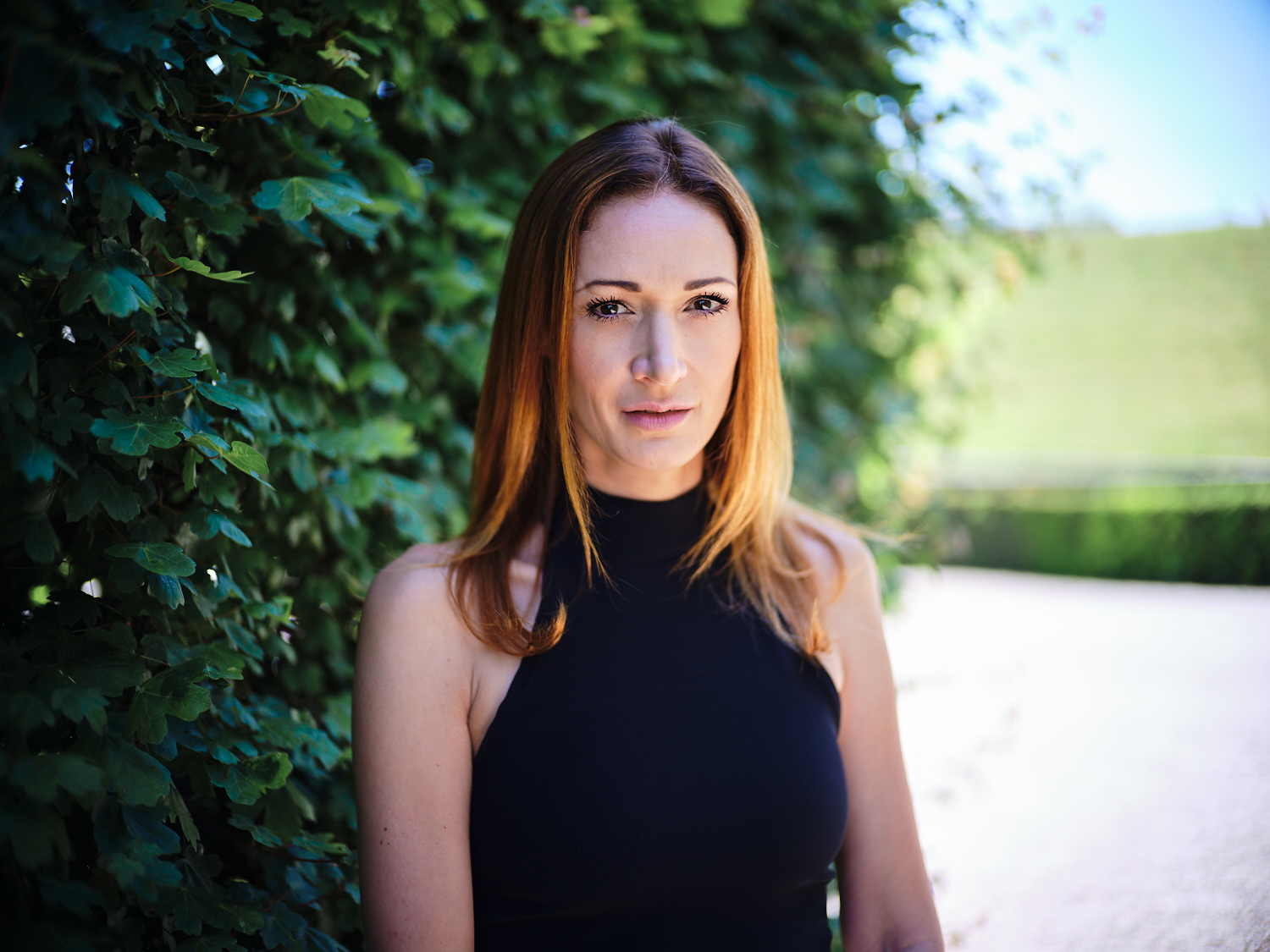
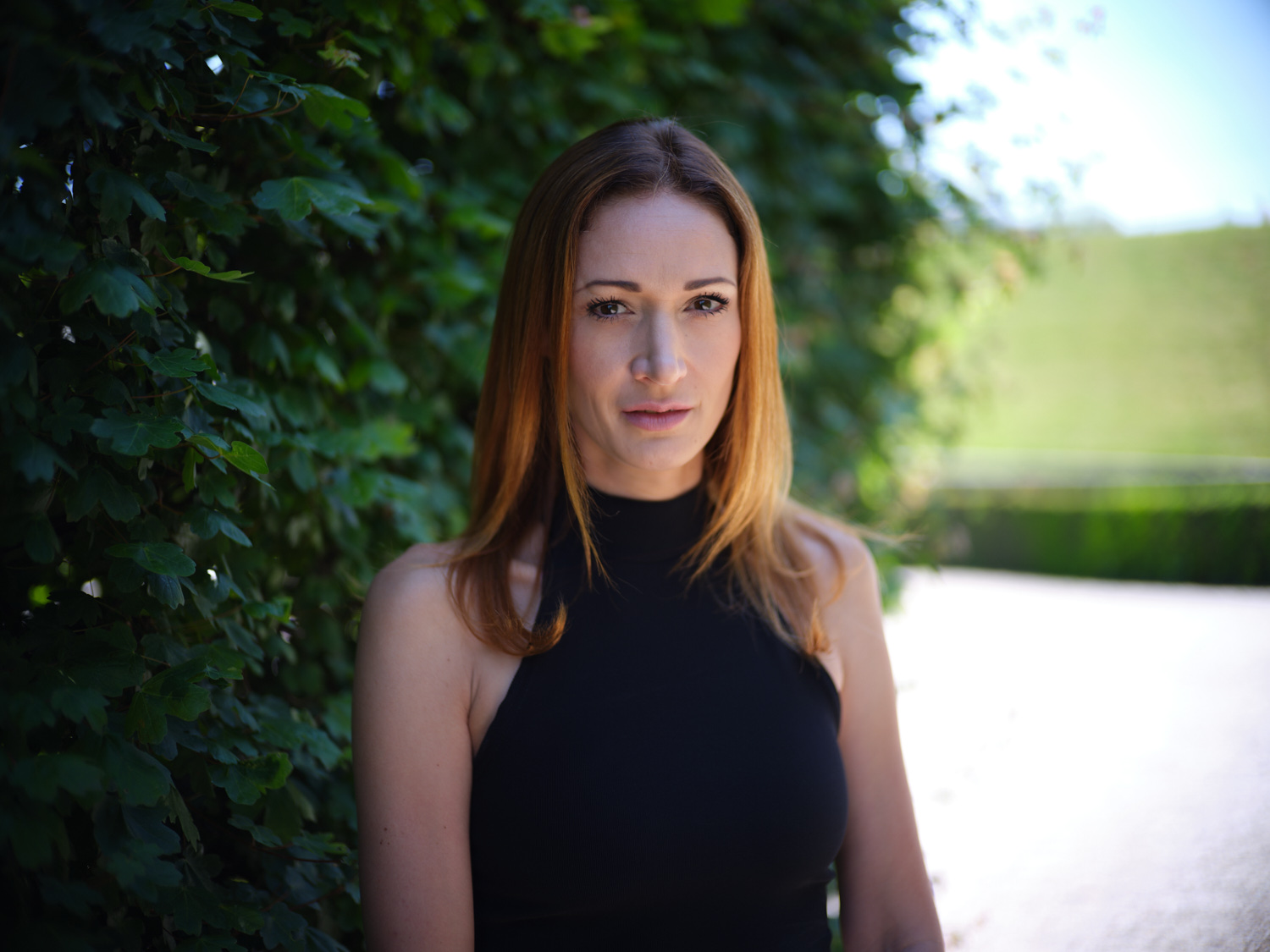
Leica 50mm Summicron (6 bit version) – edited & unedited at F2
I hoped that the Leica Summicron due to its outstanding performance on the Leica M would cover the sensor good enough to produce some nice bokeh photos. Unfortunately it does not cover the entire sensor – the corners suffer from strong vignetting, that can be reduced, but then it leaves us some smeared corners. The center performance is very good, so is the bokeh. If you tend to shoot without obstacles near by, then it might work, but thats very restrictive and far from beeing perfect.
The Vignetting gets better, the more you stop down, but still the corners are smeared.
To me it shows that the Summicron 50 has been perfectly optimized for Leica M cameras, as well as for a perfect balance between size and stellar performance. On the „M“ this is my 50mm Landscape lens, as it has incredible microcontrast, sharpness and pleasant rendering.
Side Note: I have read at some blog that the Leica Summicron 50mm APO as well as the 50mm Summicron rigid both cover the entire Sensor. I cannot ccompletely confirm this, cause I dont have these lenses!
The Voigtlaender 50mm Nokton F1.5 Asph.
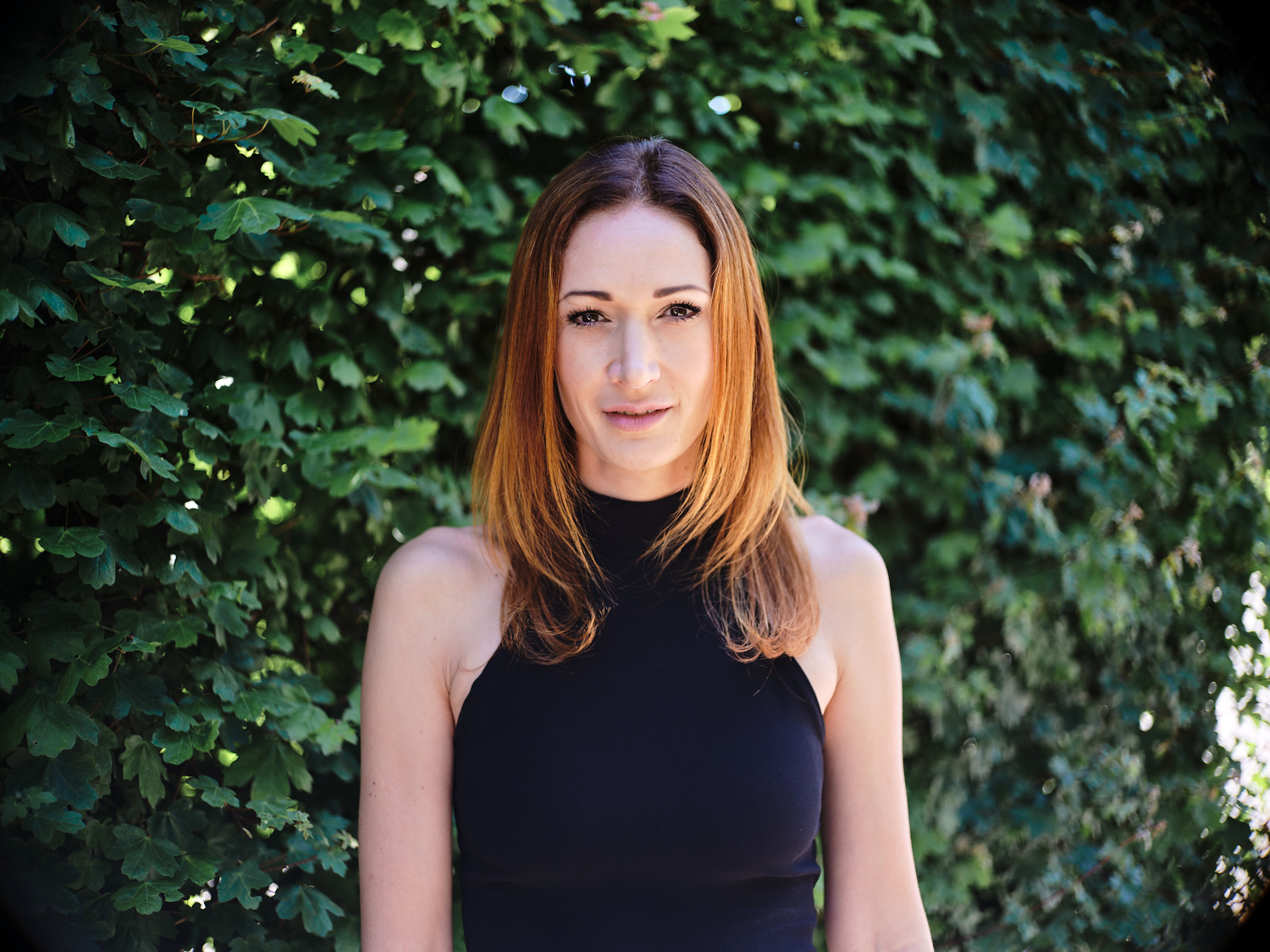
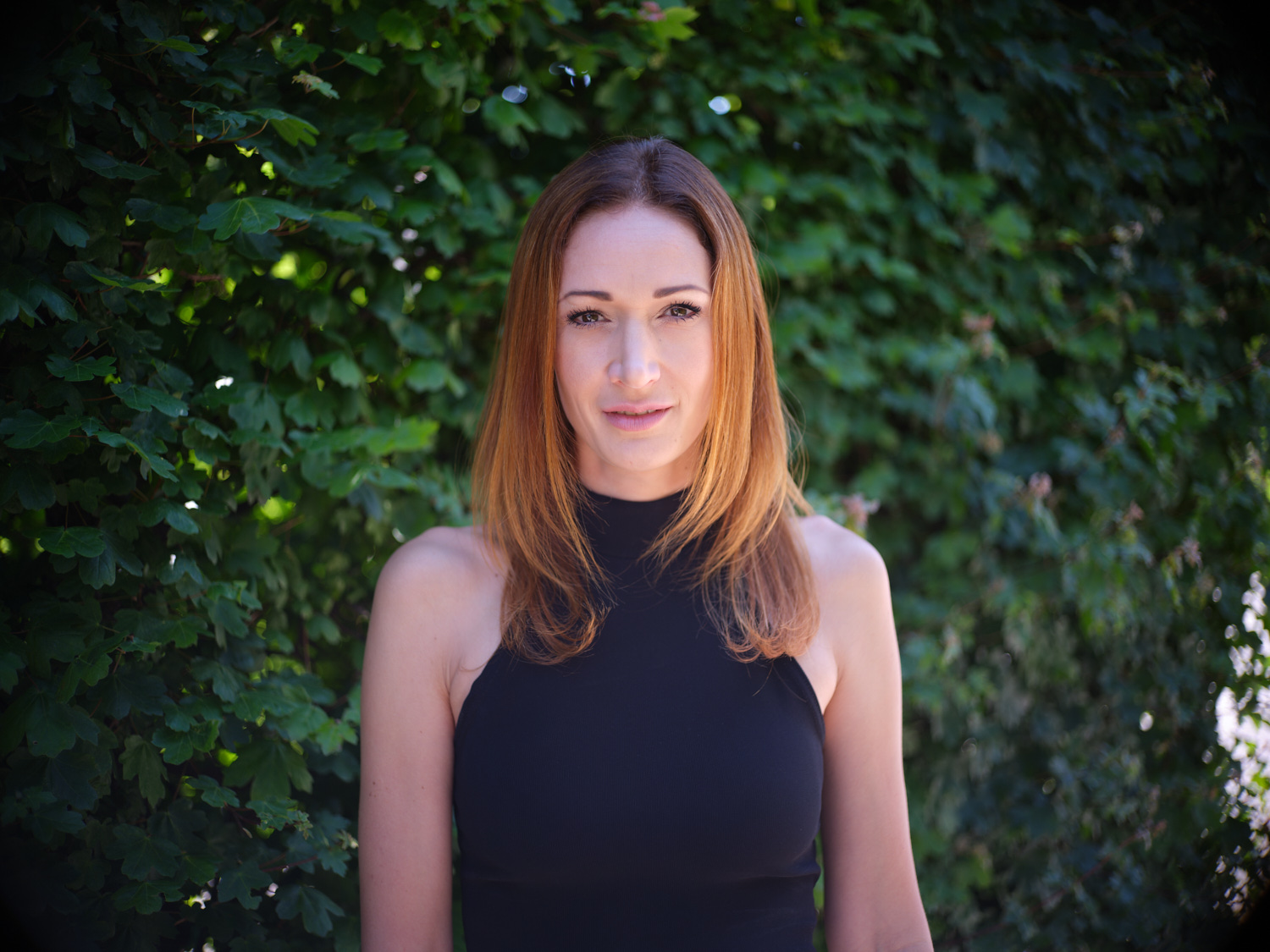
Voigtländer 50mm Nokton F1.5 – edited & unedited at F1,5
The Voigtländer was the first lens I bought, when I entered the Leica M System. By the time I also used the 40mm Summicron on the M6 (Film Body). Later I also got the 50mm Summicron as a replacement for the Voigtlaender, but I ended up keeping both, the Summicron for landscape and travel, and the Voigtlaender for portraits. Its a lovely lens that performes very well on the M.
Now the big surprise to me was, that the Nokton seems to cover the sensor a bit better than the Summicron. The corners are kind of sharp, but there also heavy vignetting that you can’t get rid of. The only way is to crop the image. So its again usable with some restrictions.

Clearly visible on the upper left and down left corners of the photo: the smeared corners of the Summicron (left side) and the Nokton with its heavy vignetting (right side), that you can’t get utterly rid of.
Voigtlaender Ultron 35mm F2 Asph.
I testet this lens directly after the 50mm Voigtlander and completely missed the focus on the F2 shot, but there was even more vignetting than at F2,8. I only spent very little time in editing, as to me it was clear that the lens does not cover the whole sensor good enough.
This first test is more about the corners, not so much about sharpness. For those who care: Sharpness was poor at F2,8 and only ok until F5,6. Good at F8 and F16.
Now that was one of the more interesting facts, that this lens performs pretty poor on the GFX while other Voigtlanders do well. Even more interresting as the 35 Ultron is the newer design compared to the CV 1.5 Nokton – and in fact is a lovely little gem on the Leica M almost as good as the legendary Summicron 35mm!
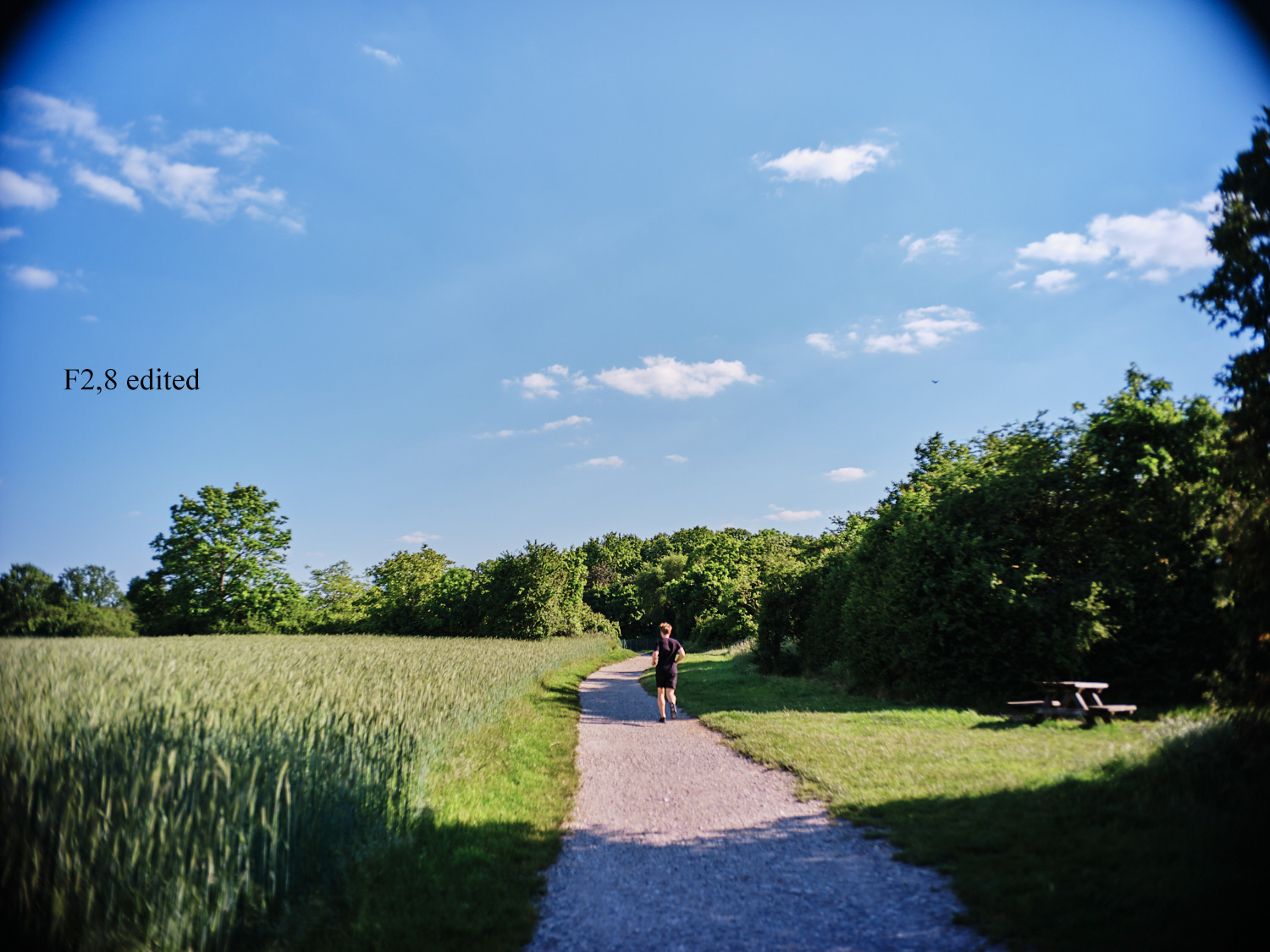
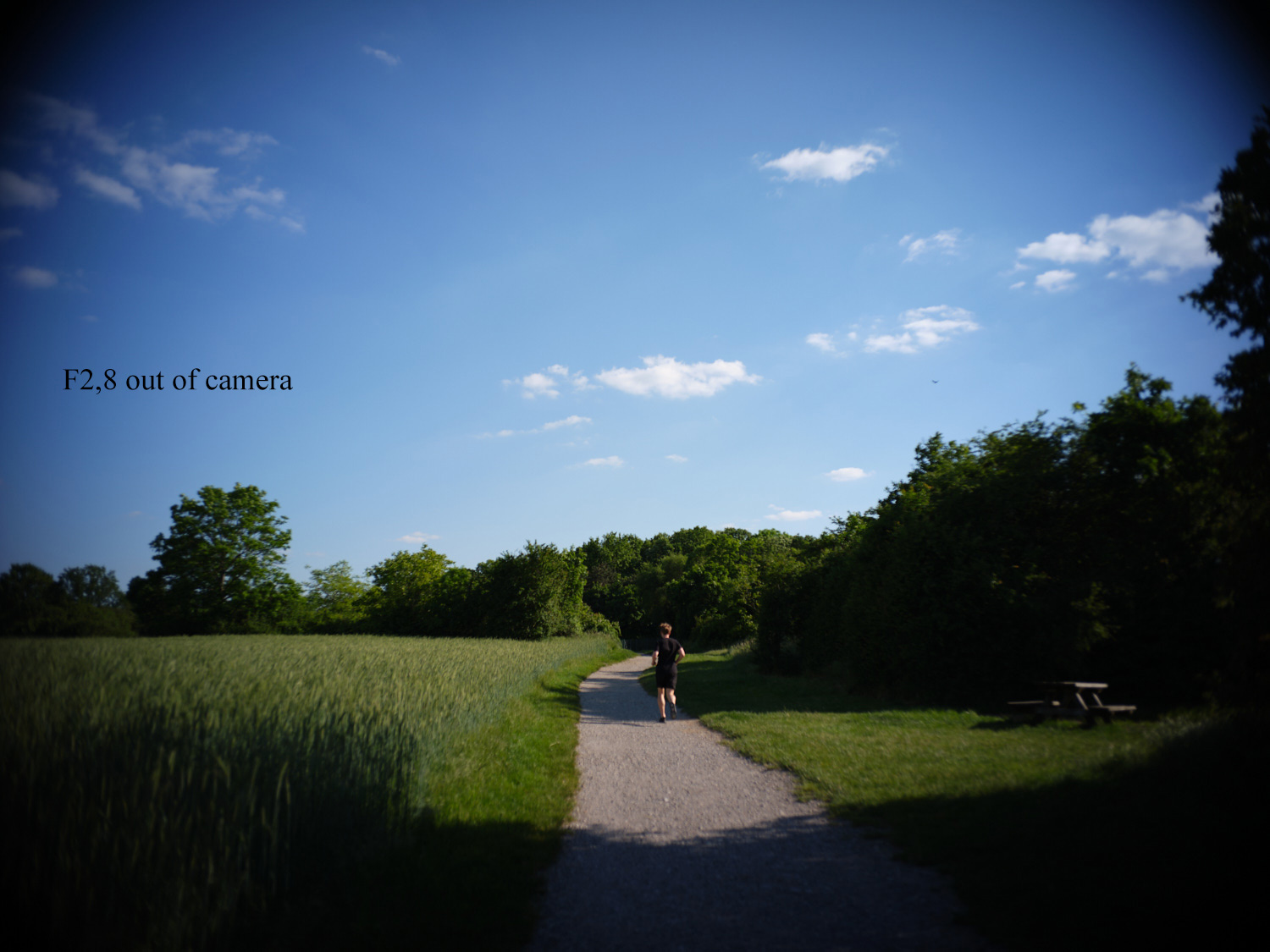
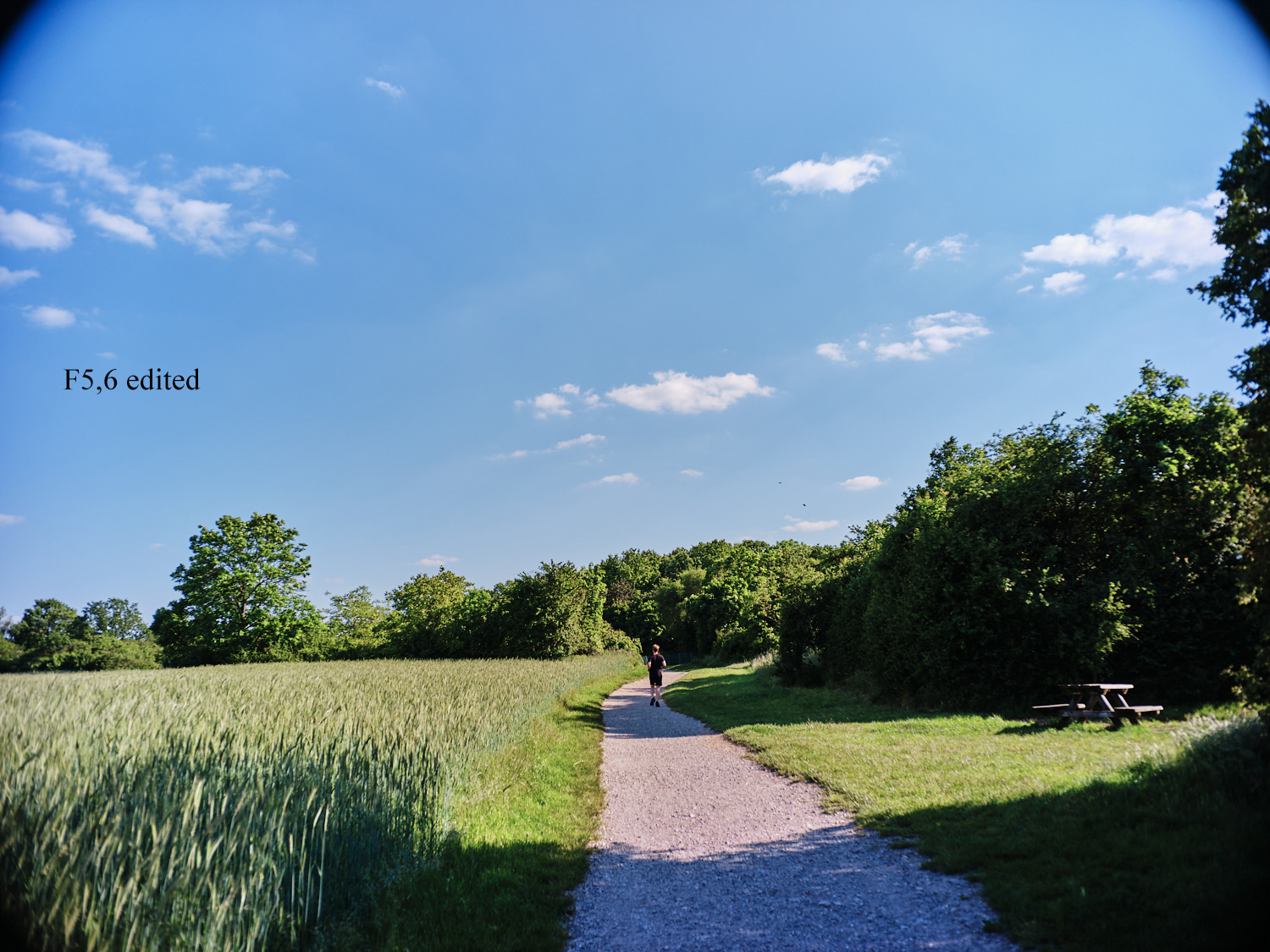
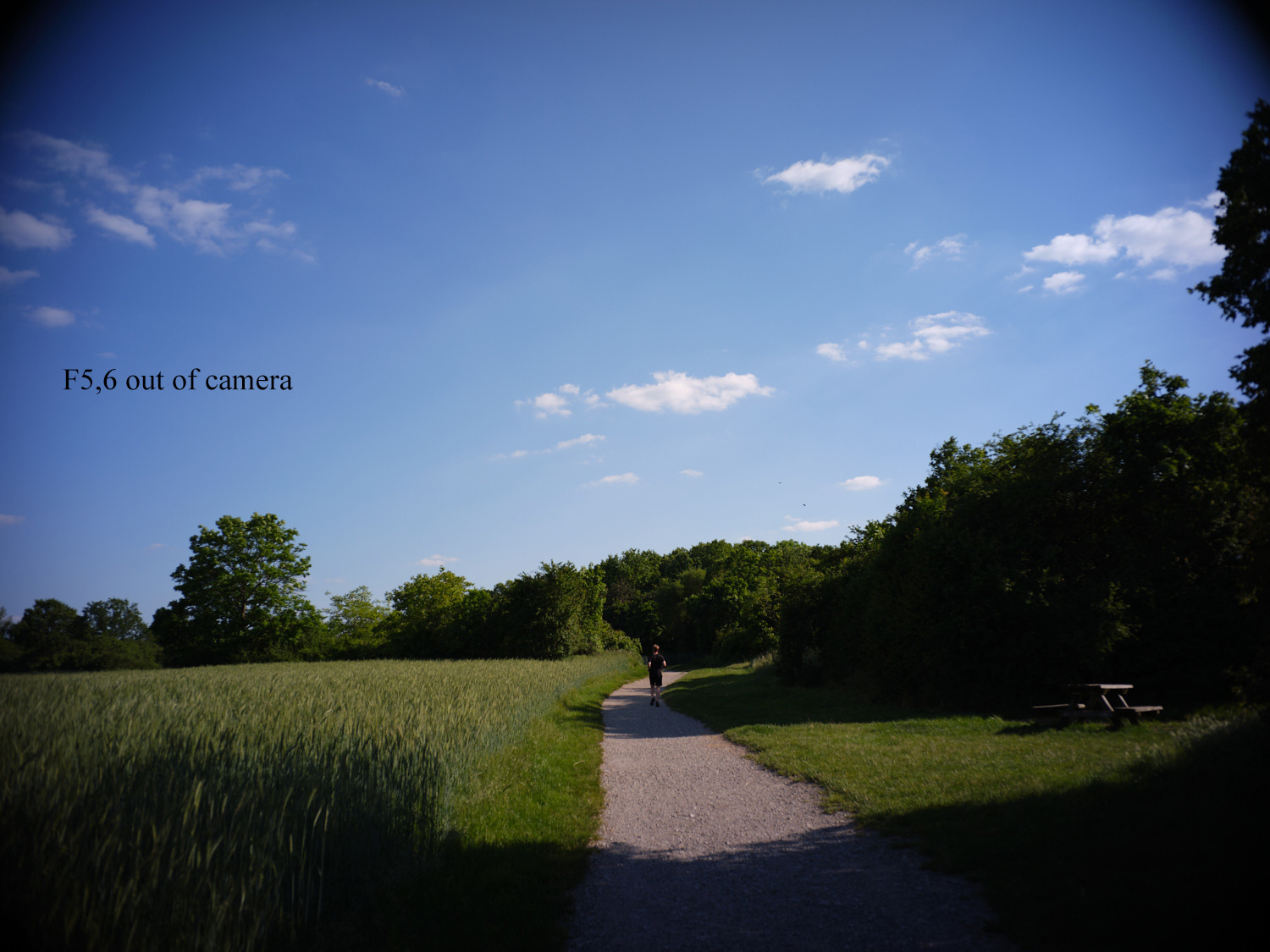
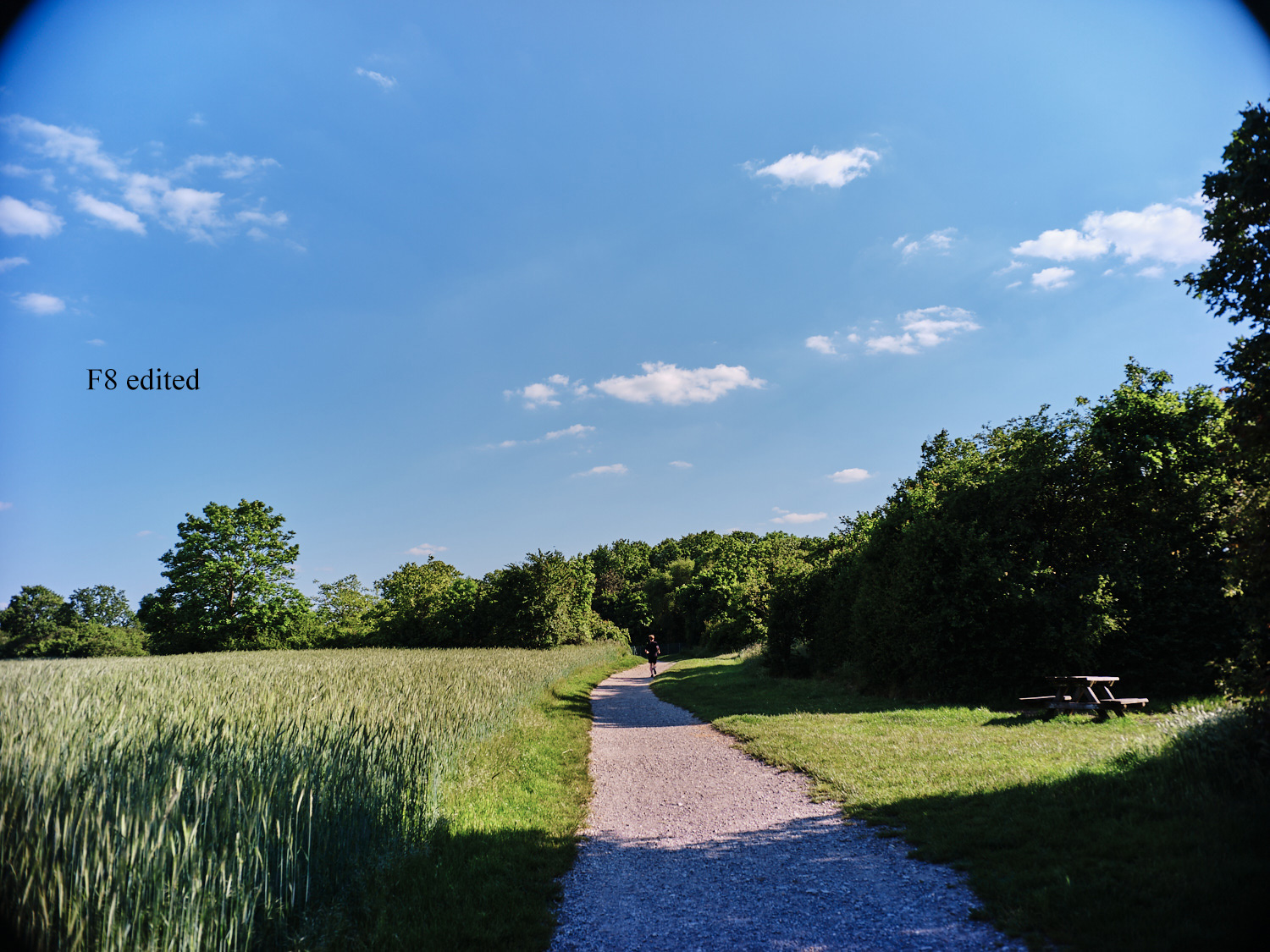
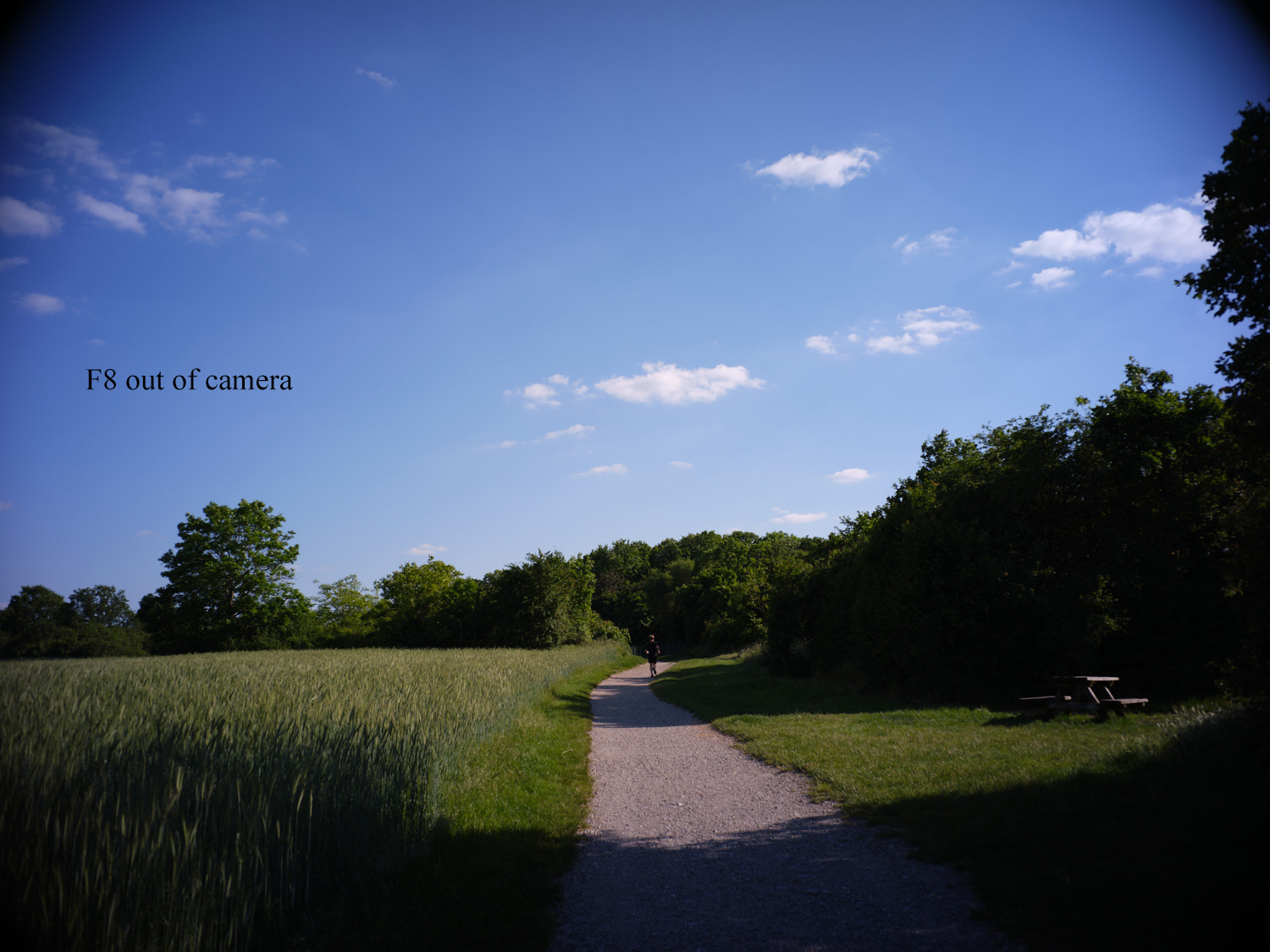
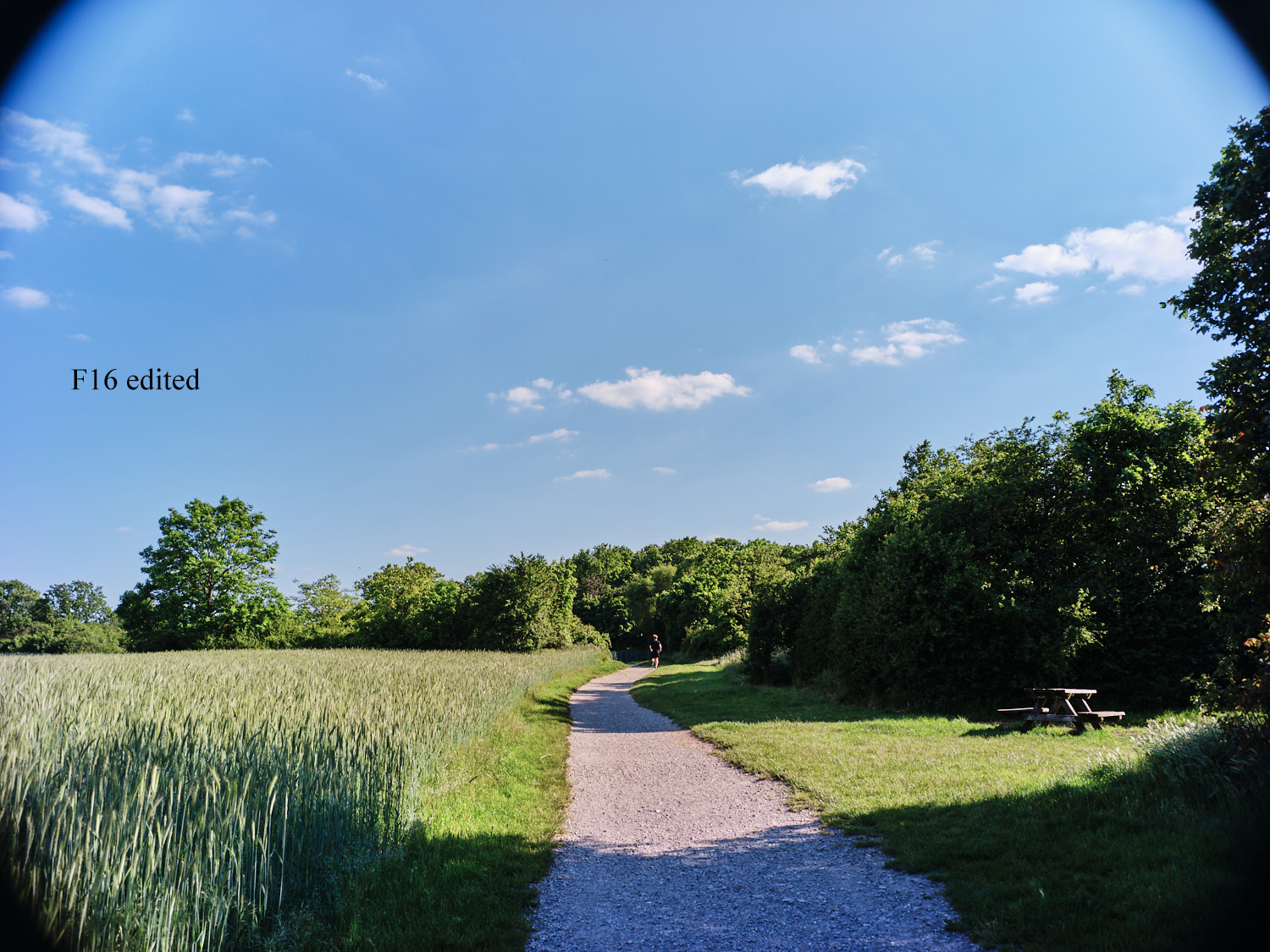
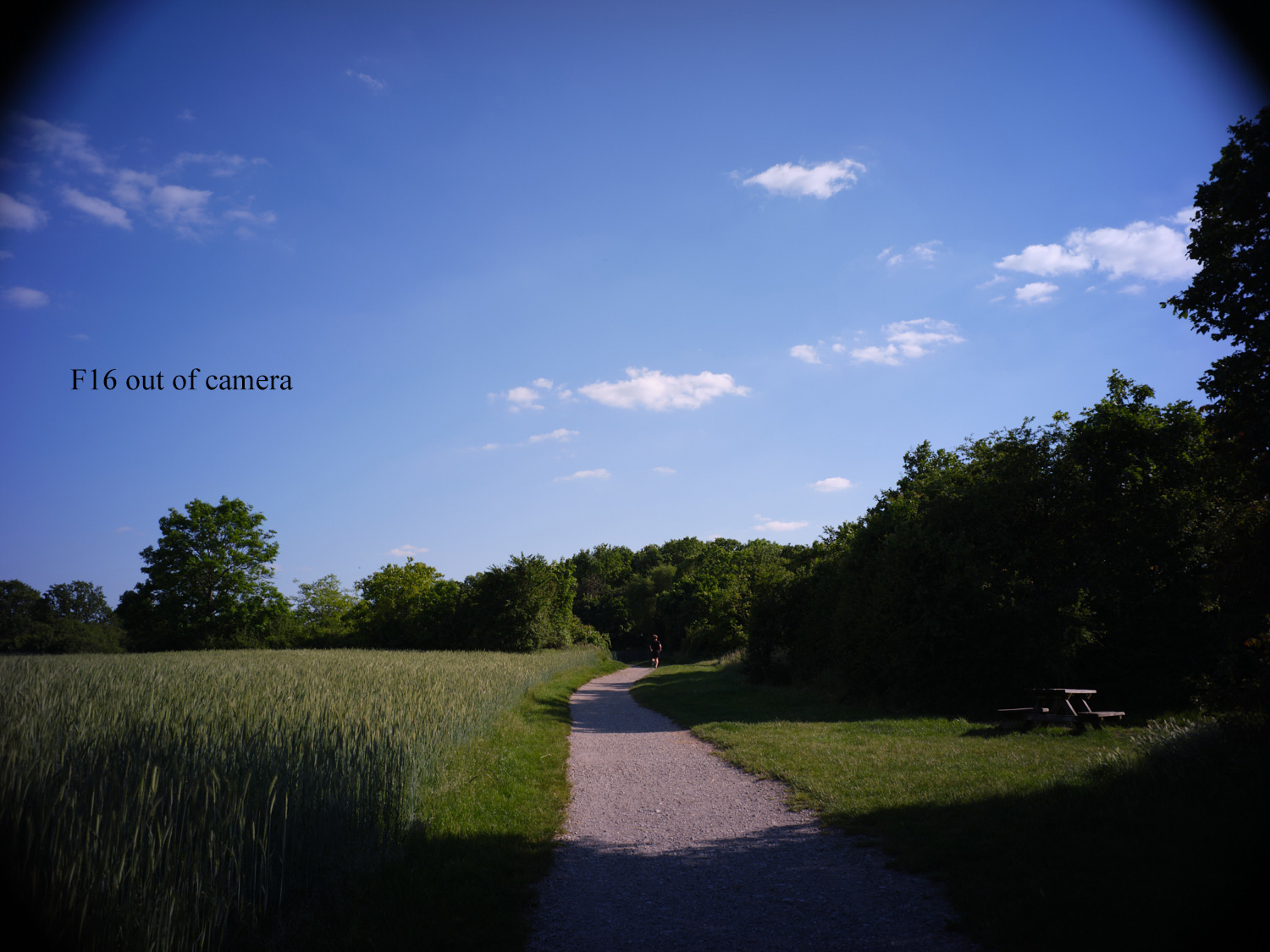
Voigtländer 35mm Ultron F2 – edited & unedited at different f-stops
Zeiss Biogon C 35mm F2.8
The Zeiss 35 C Biogon was probably the lens I was most curious of. If you own this lens, you know why. It is the sharpest lens I ever owned. On the Leica M sharp across the frame, from F2.8 on incredible optical performance – so to say a landscapers dream.
So I thought – maybe, maybe if there is another lens than Leicas 50mm APO, that can handle Mediumformat, then it could be this one.
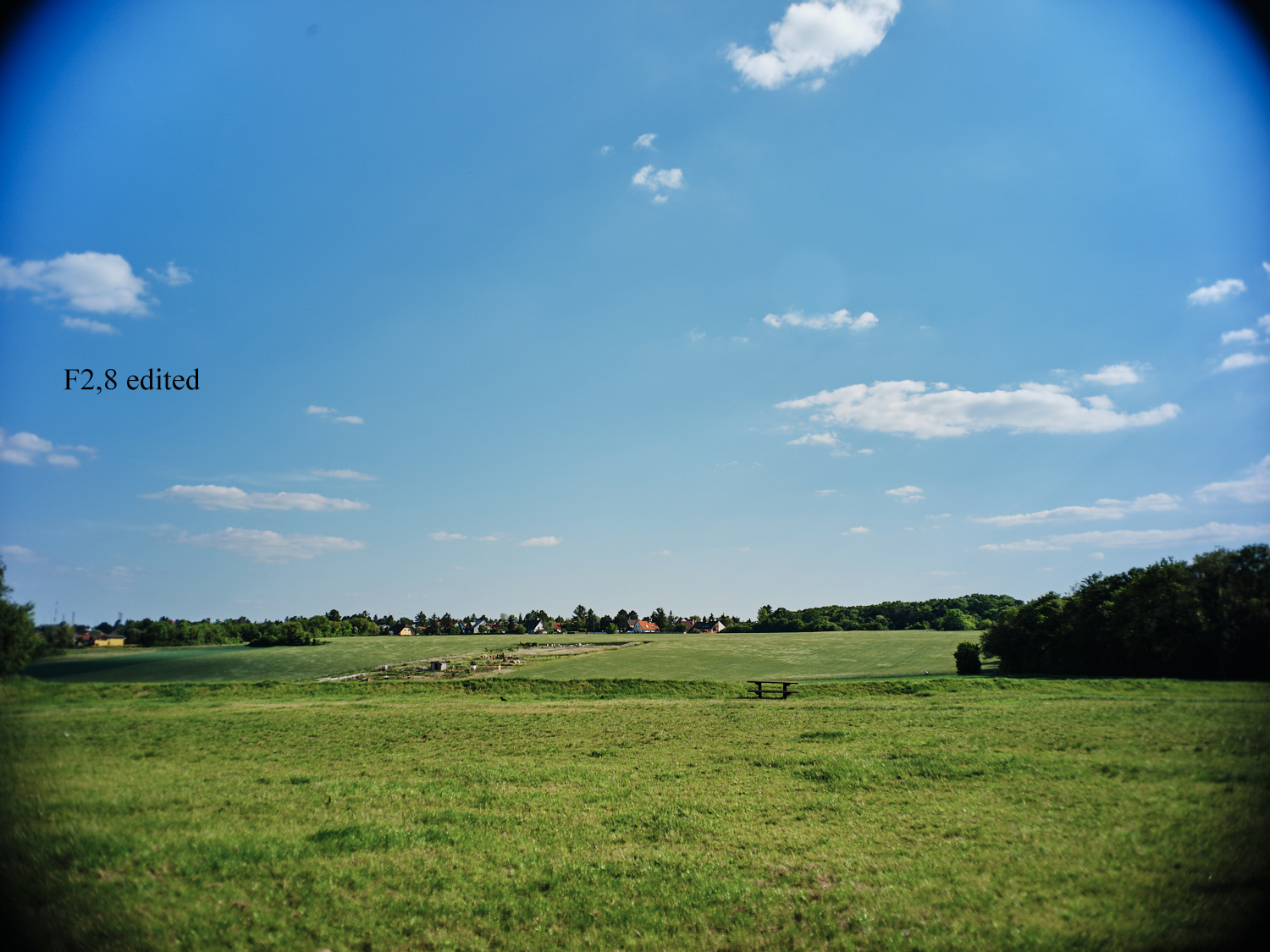
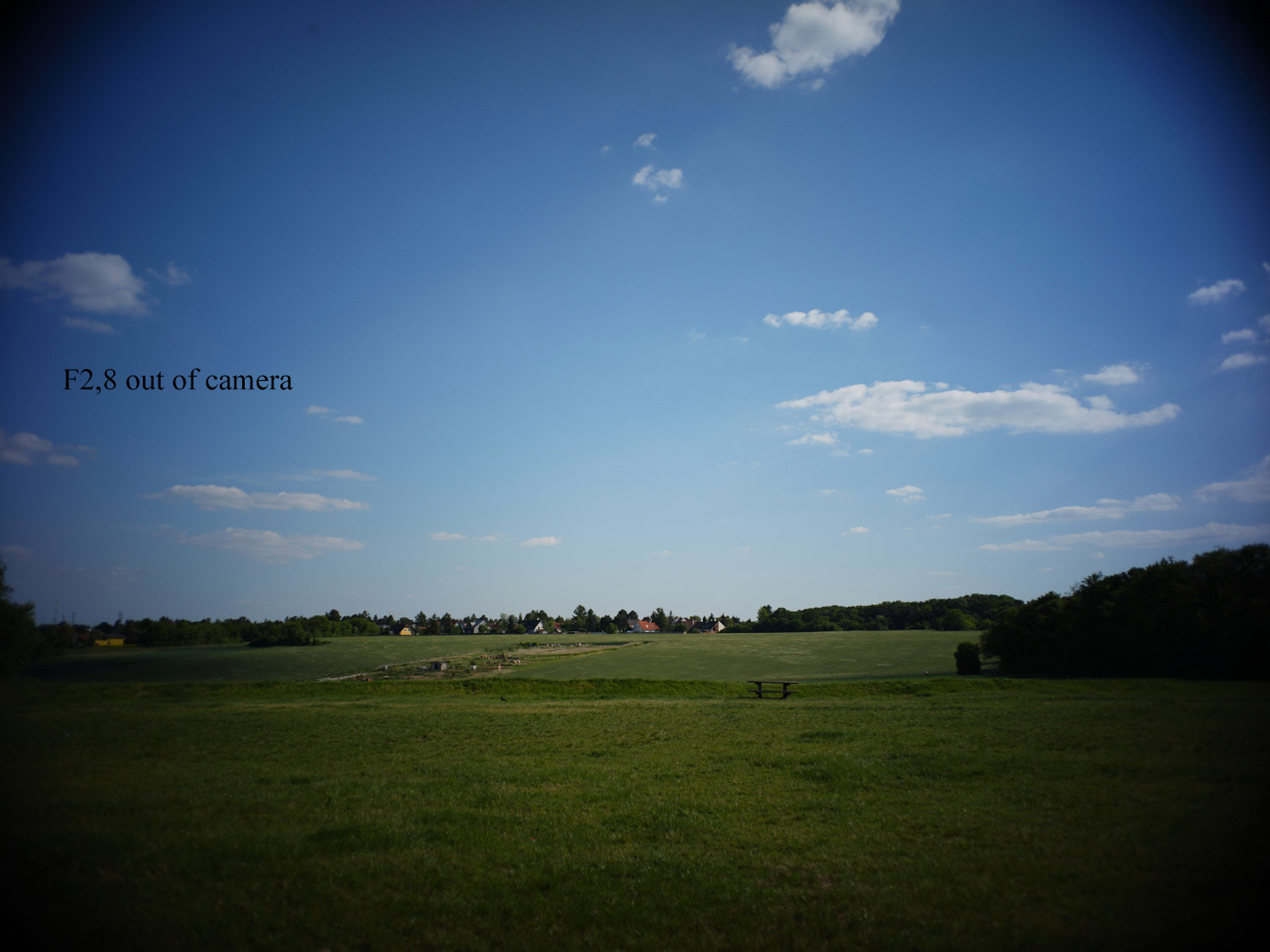
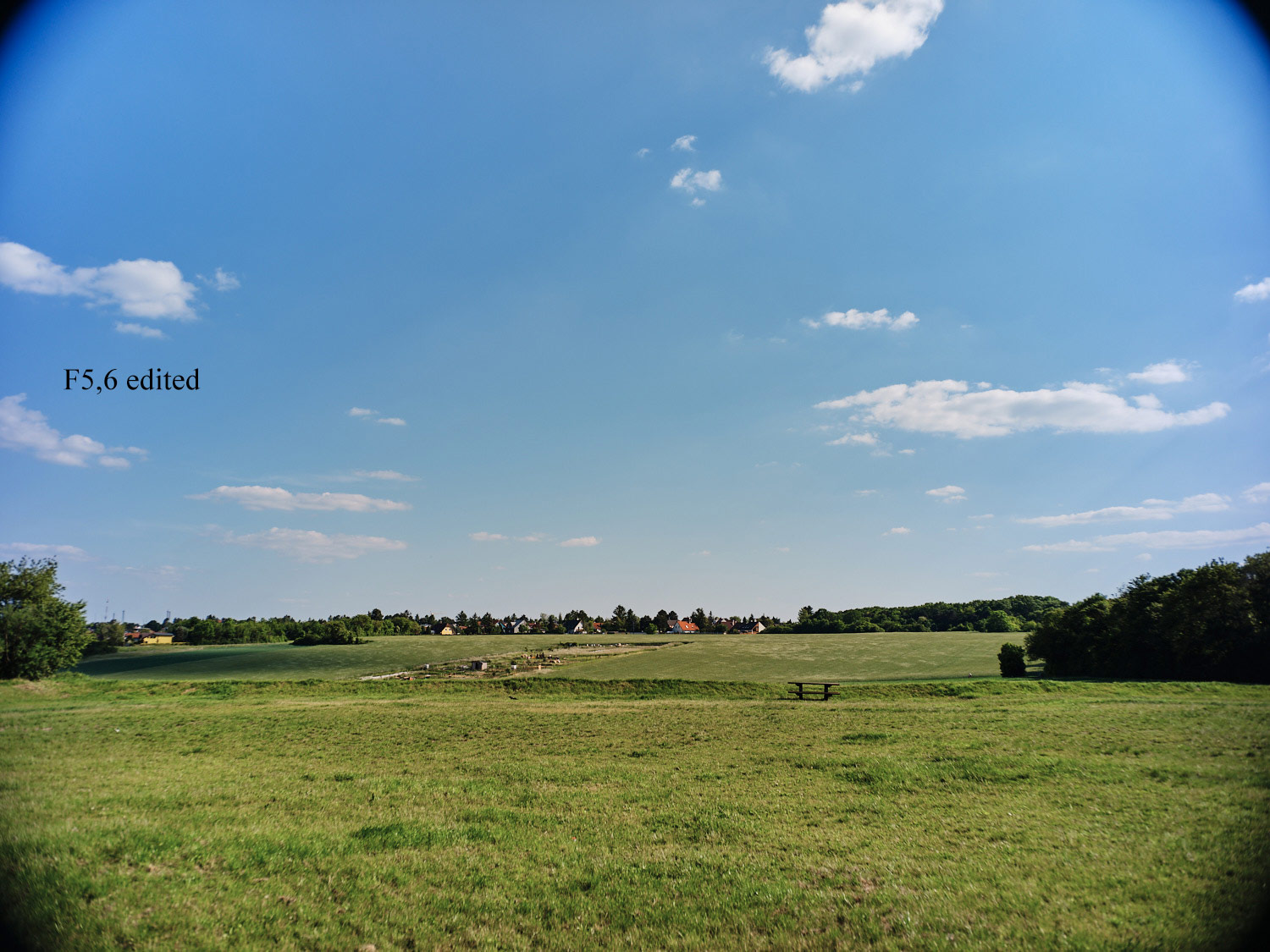
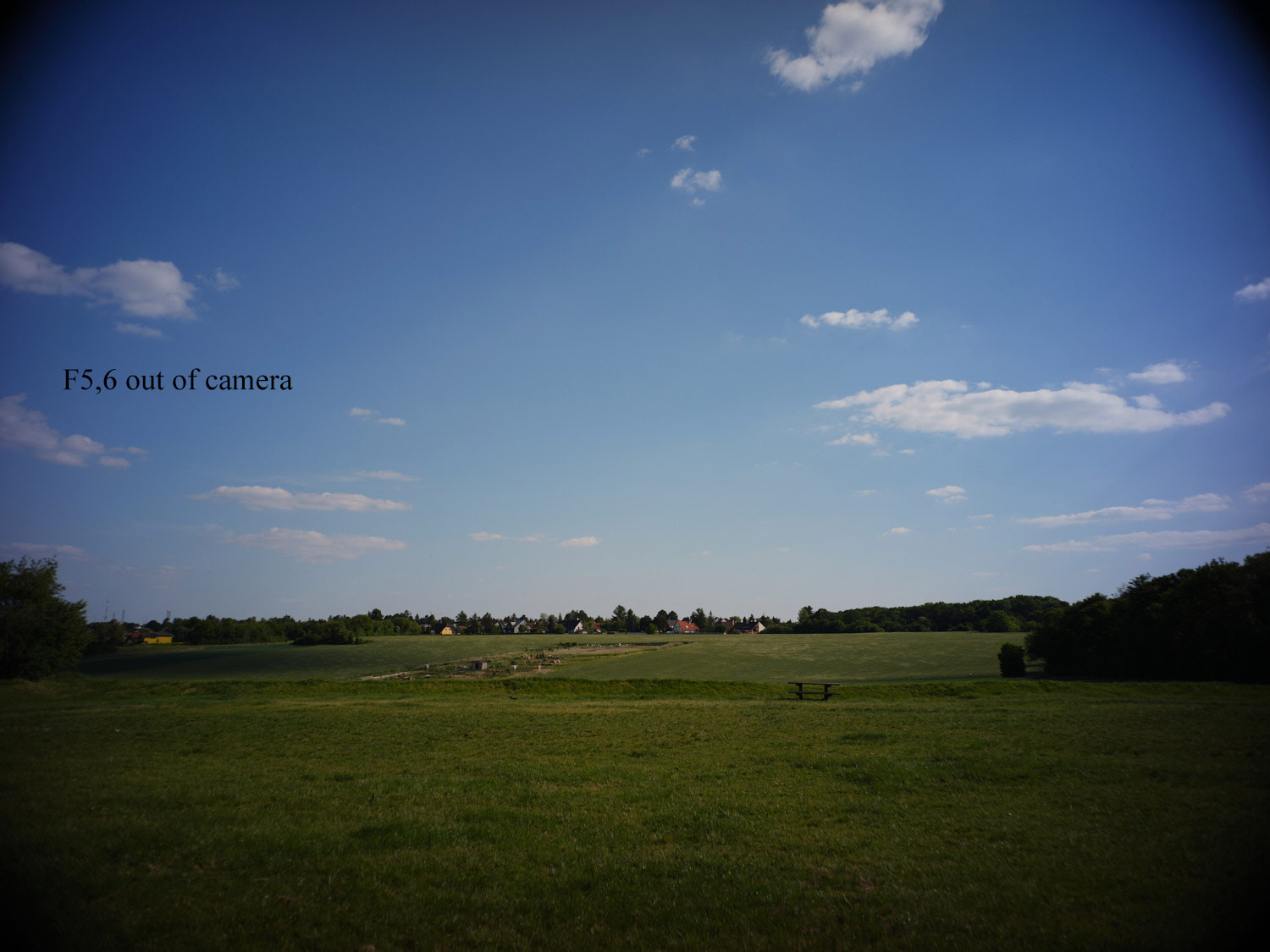
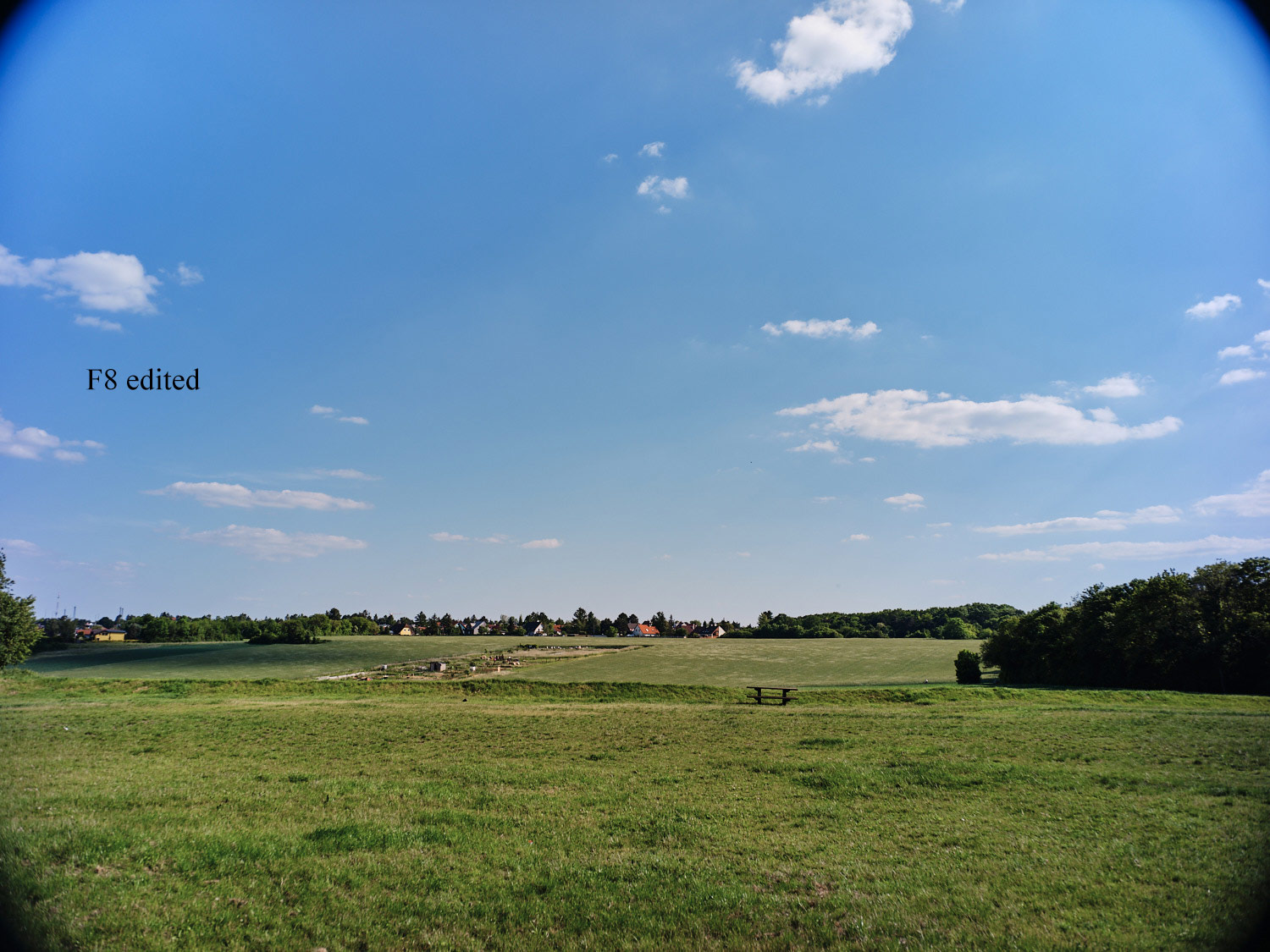
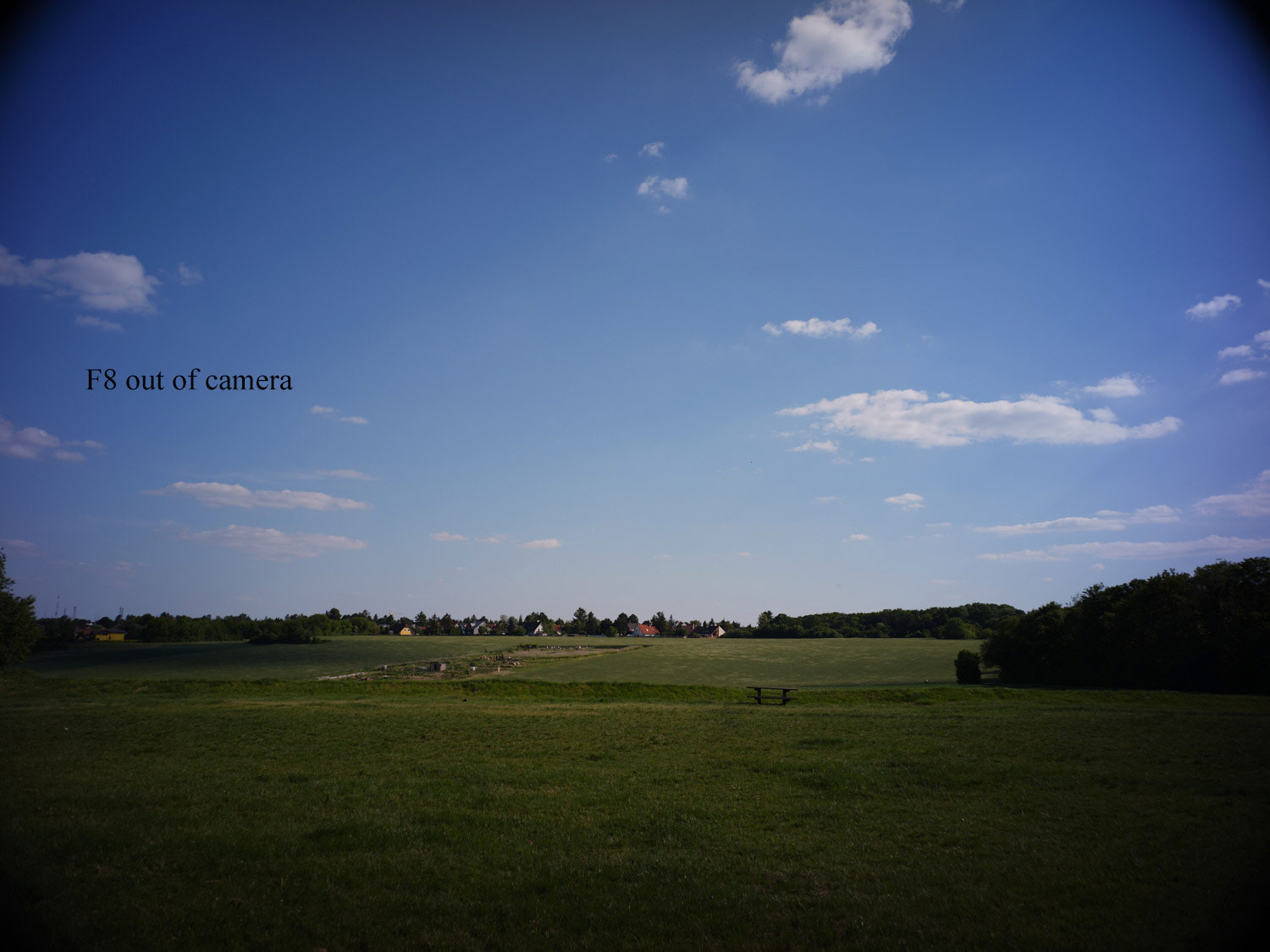
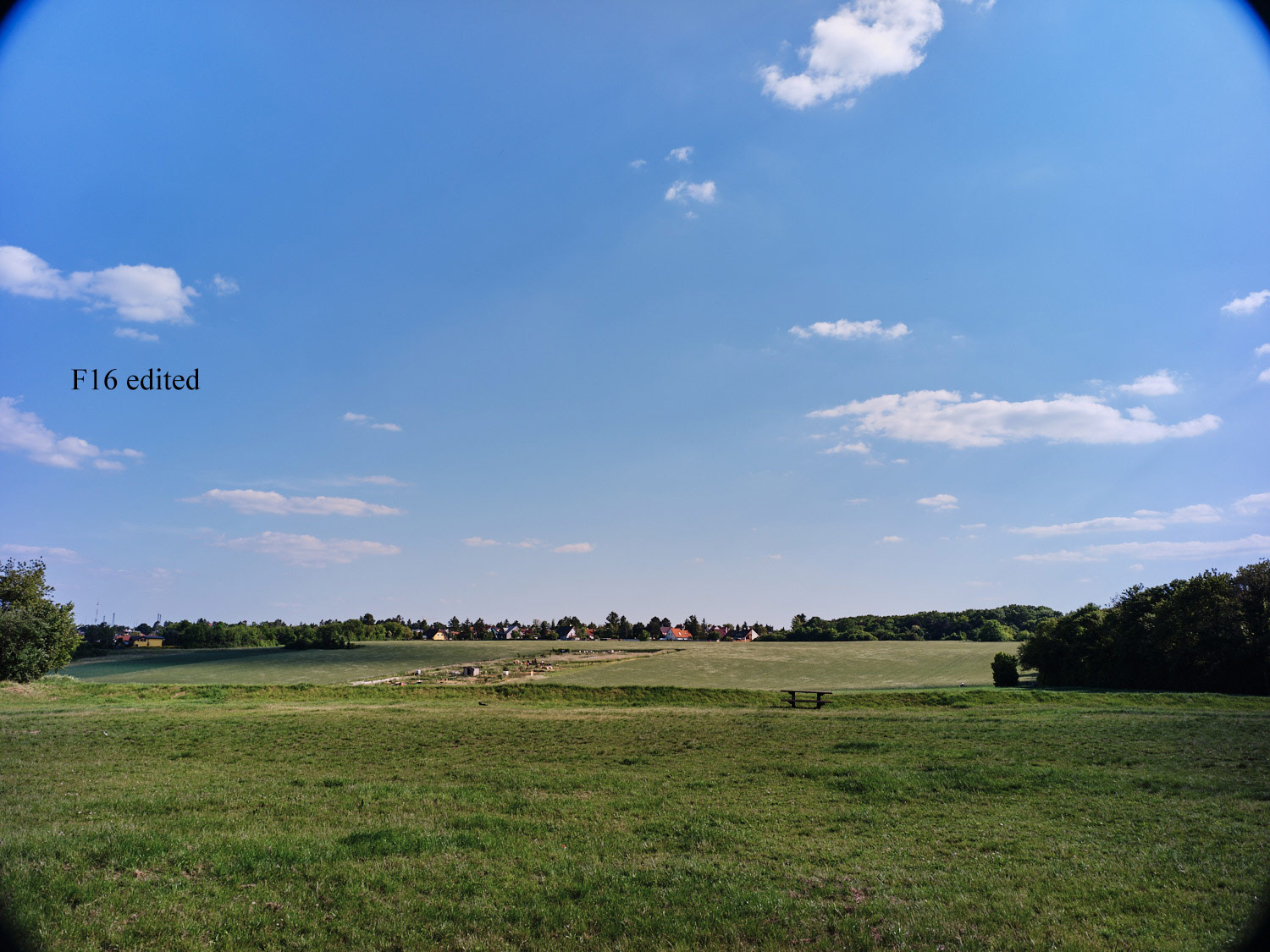
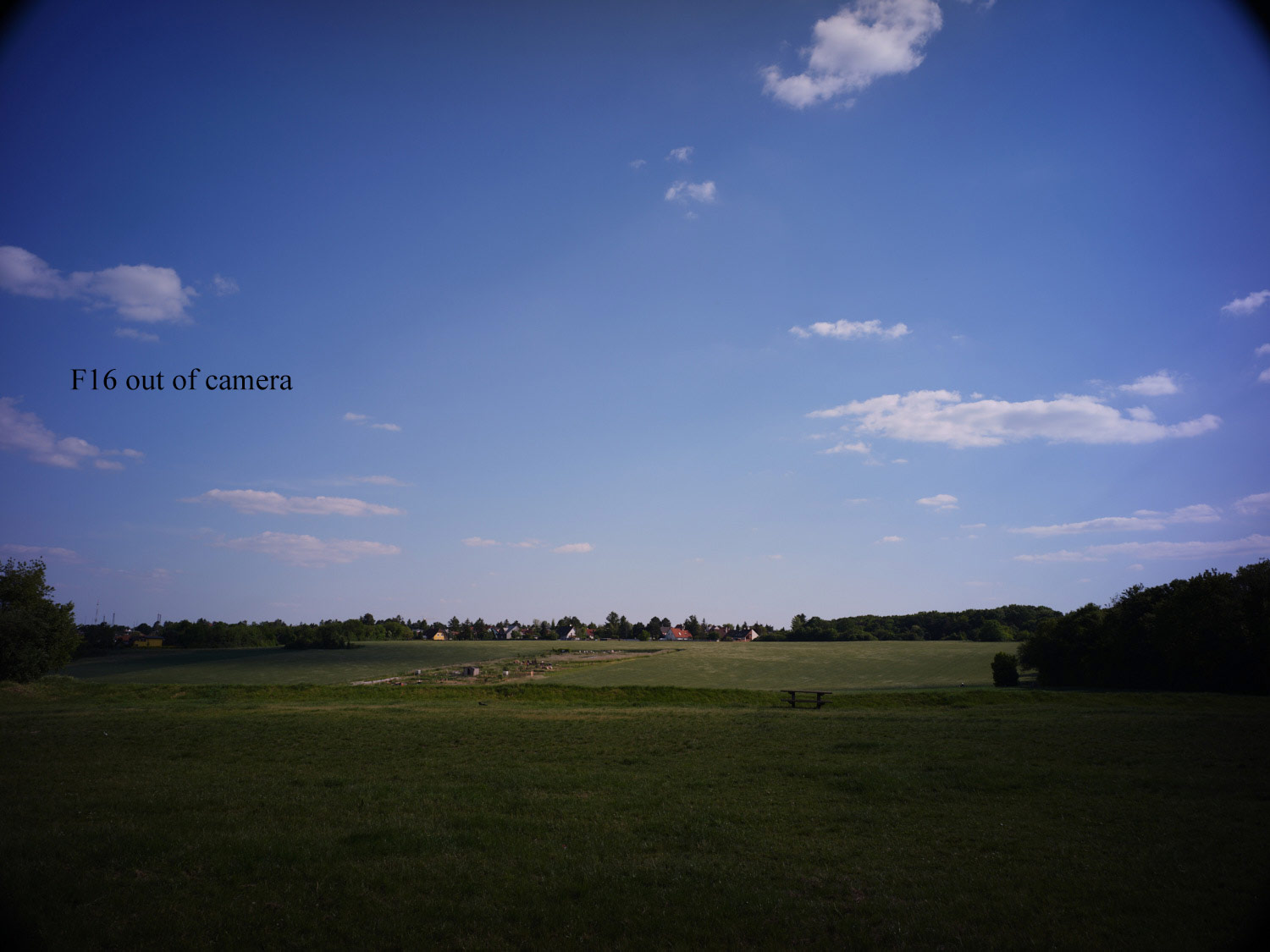
Zeiss Biogon C 35mm F2.8 – edited & unedited at different f-stops
Well – Almost!
From F8 on the Zeiss comes VERY close to covering the Sensor in terms of vignetting. Sharpness is incredible in the center, good on the egdes and also pretty good in the corners.
So this might be a landscapers lens, IF you already have the zeiss or want invest 700 Euros, IF you like very small, leightweight stuff and IF you are willing to sacrifice about 200 Pixels on the longer side. At 8000 x 6000 pixels there is no vignetting visible. I know its a lot of „ifs“ but the Zeiss has incredible rich details, sharpness is almost perfect, only at the extreme end of the corners might be a little soft.
Lets take a look at the sharpness: Center, corner and edge. I haven’t aplied any extra sharpening, so this is the file with a little colour correcture, exposure and I tried as good as possible to get rid of the vignetting. I spent only little time in editing.
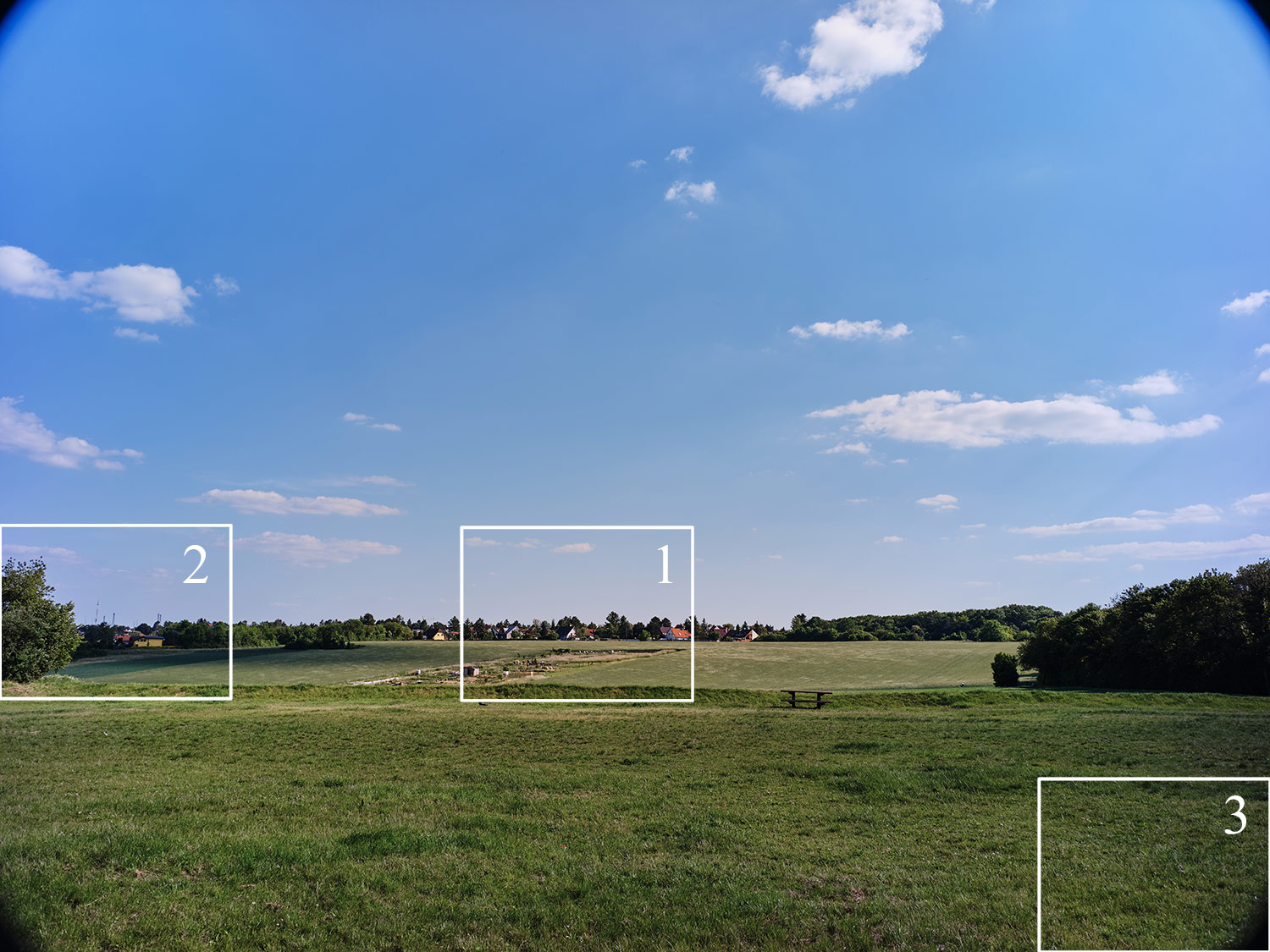
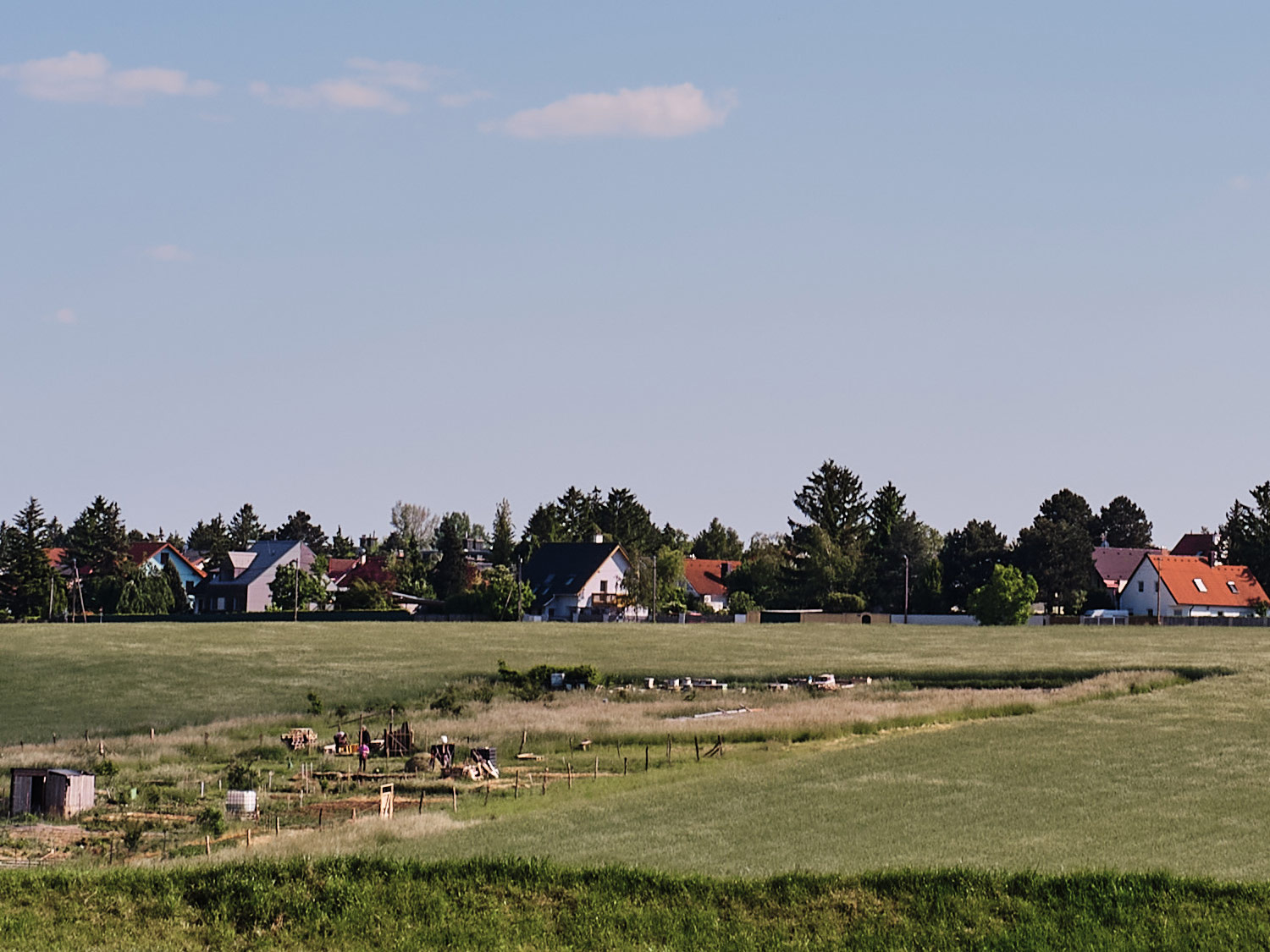
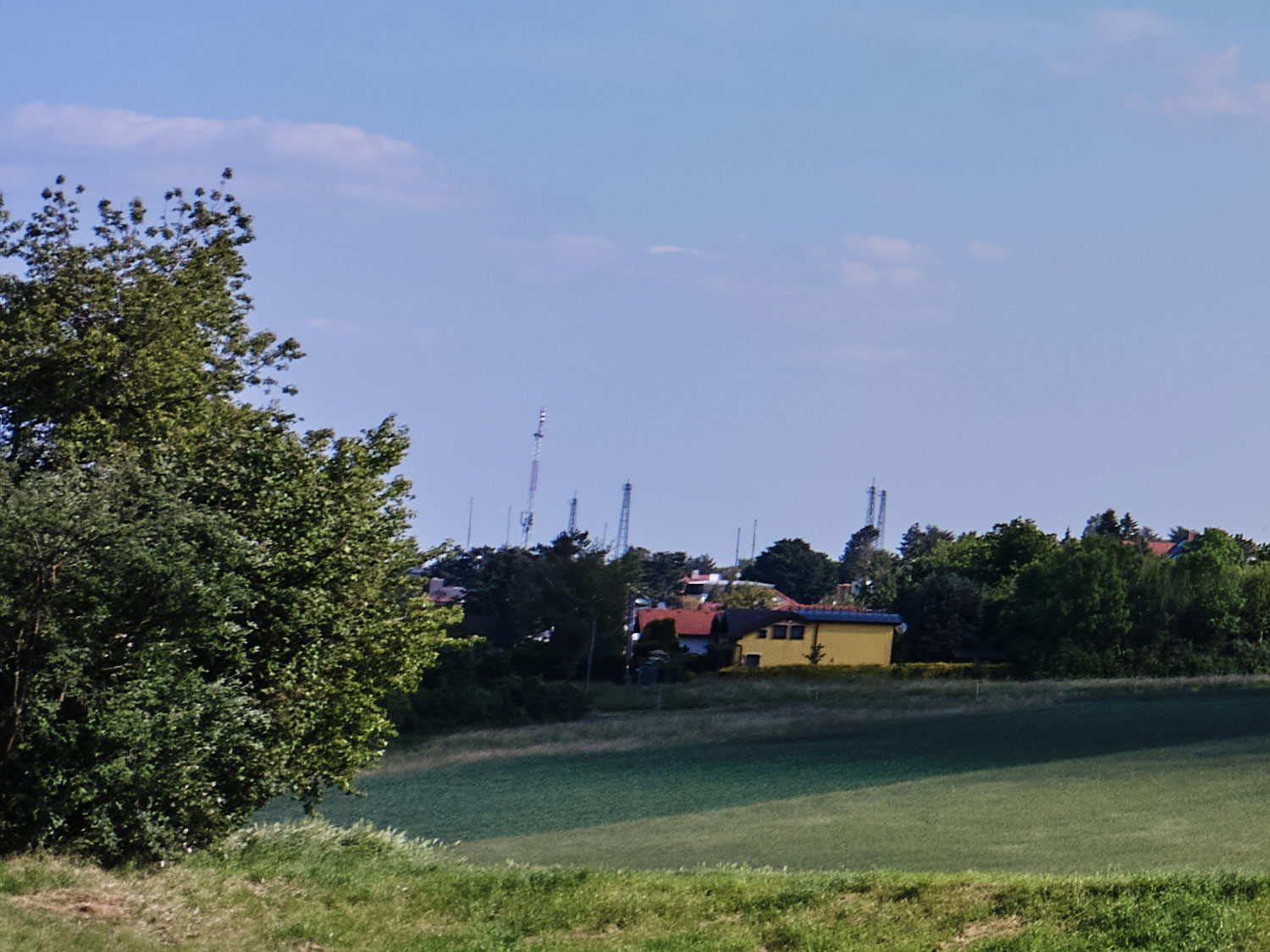
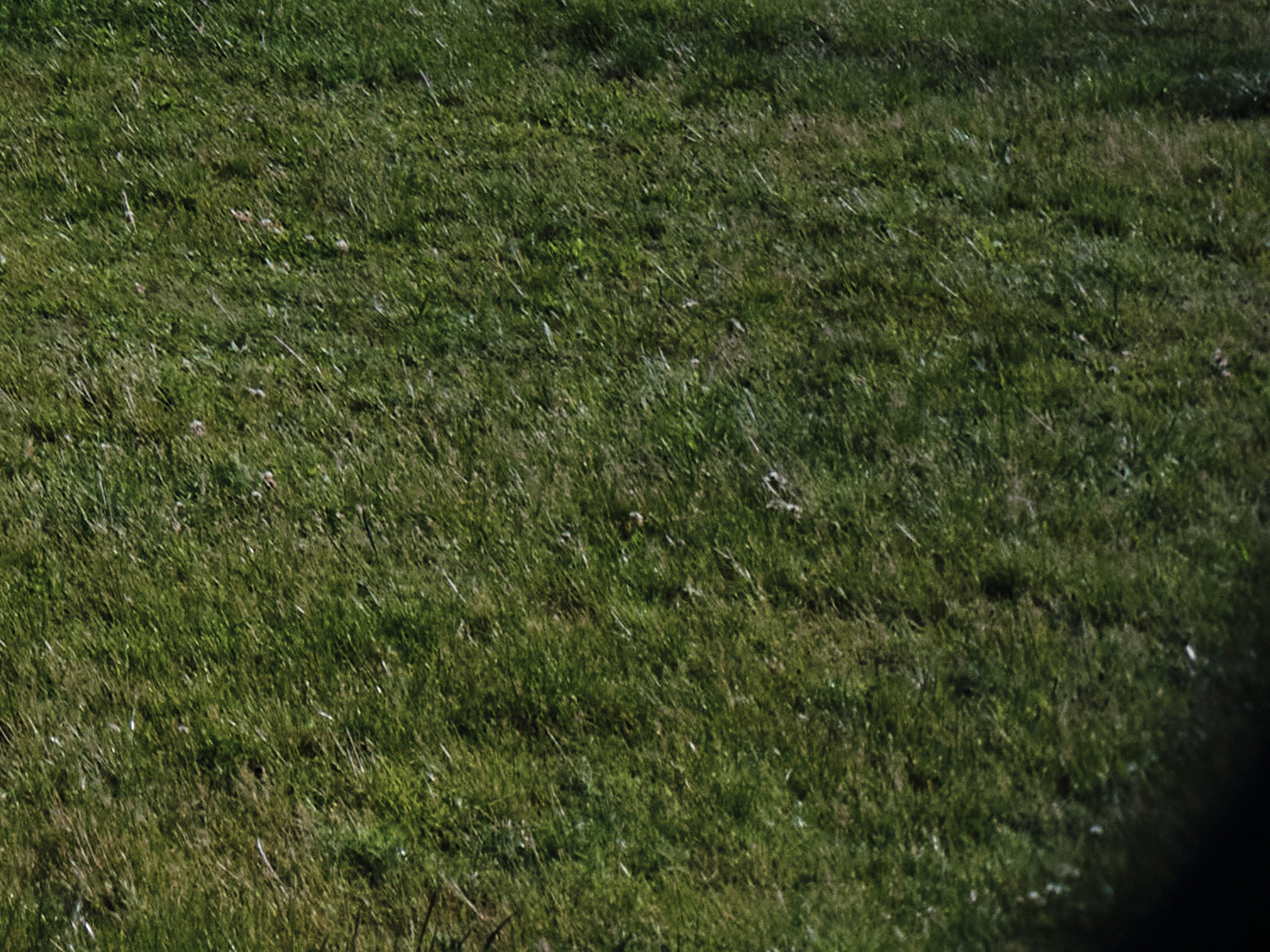
As you can see the Zeiss gets really close, no smeared corners, good sharpness, but you have to crop a little
So here we have a lens that could work on the GFX, with an equivalent of 27,6 mm, it weights 200 gram and a lenght of 55mm. I am curious how much difference there is in terms of sharpness and IQ compared to Fujis own 30mm lens. Does it get close?
Voigtlander 21mm 3.5 Color Skopar VM
Another little Voigtlaender that I really love on the Leica M. The 21mm would be a 16,5mm lens on the Fuji GFX, its tiny and a joy to use. Lets see how it performes on this big Sensor…
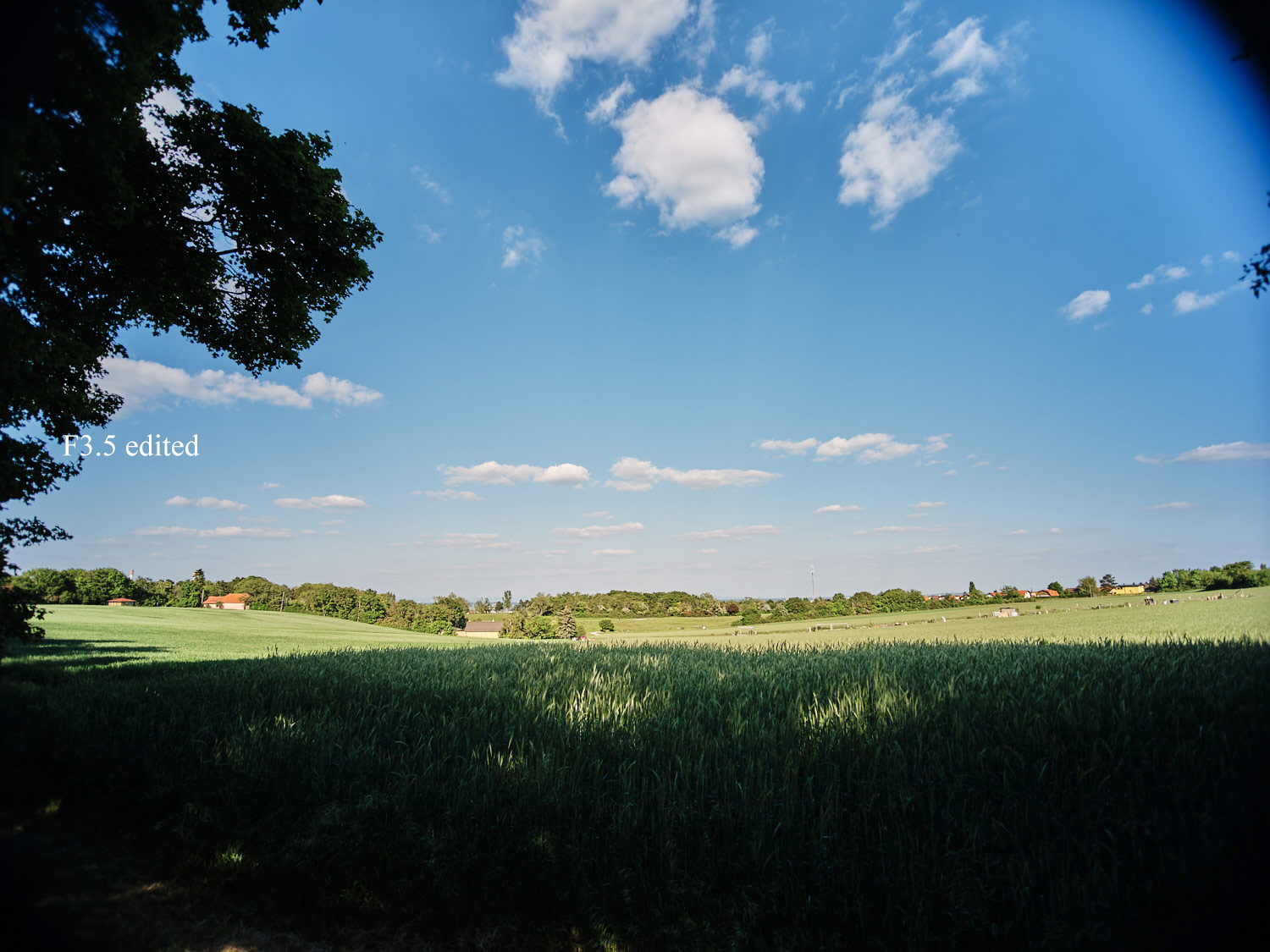
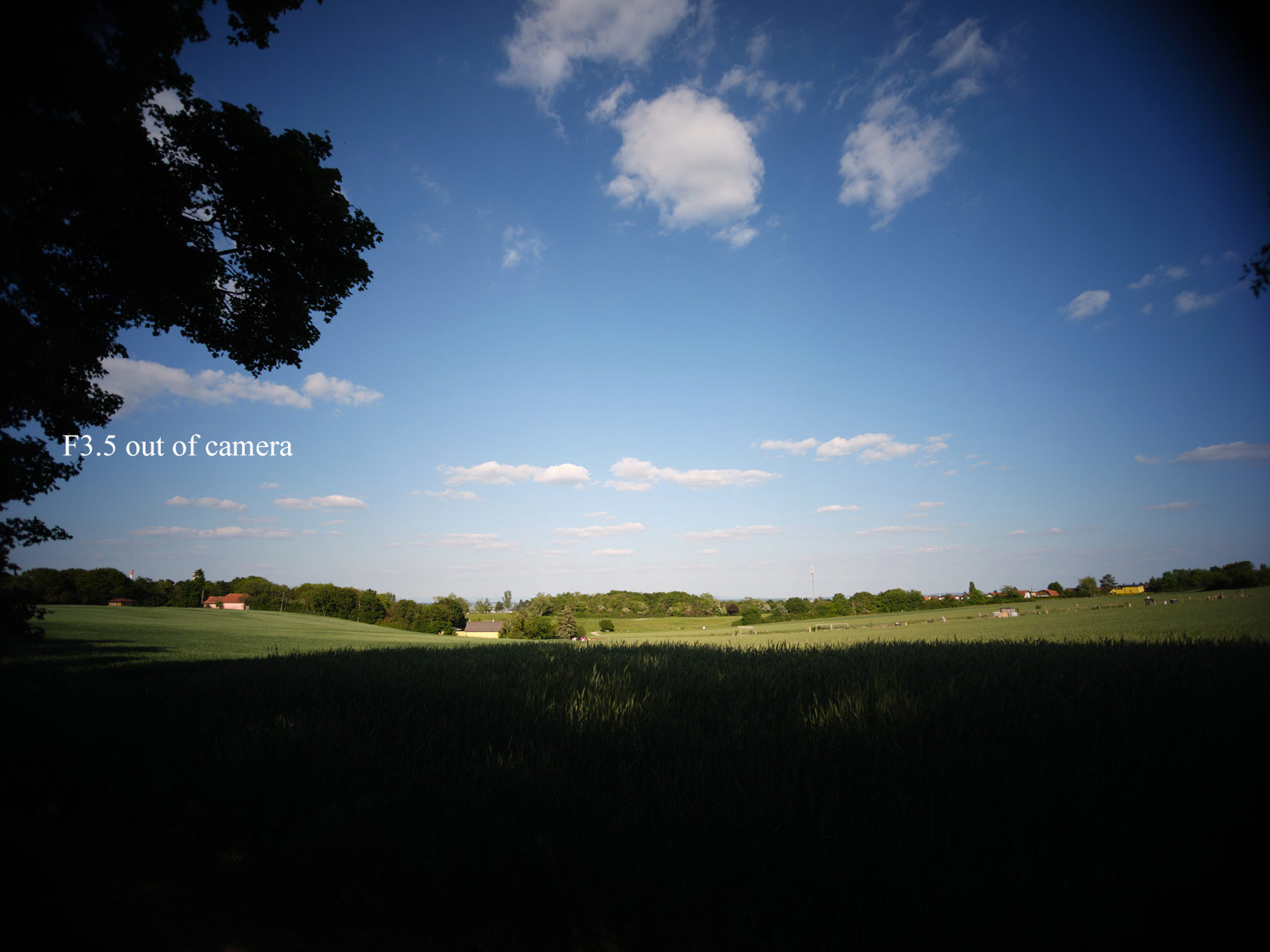
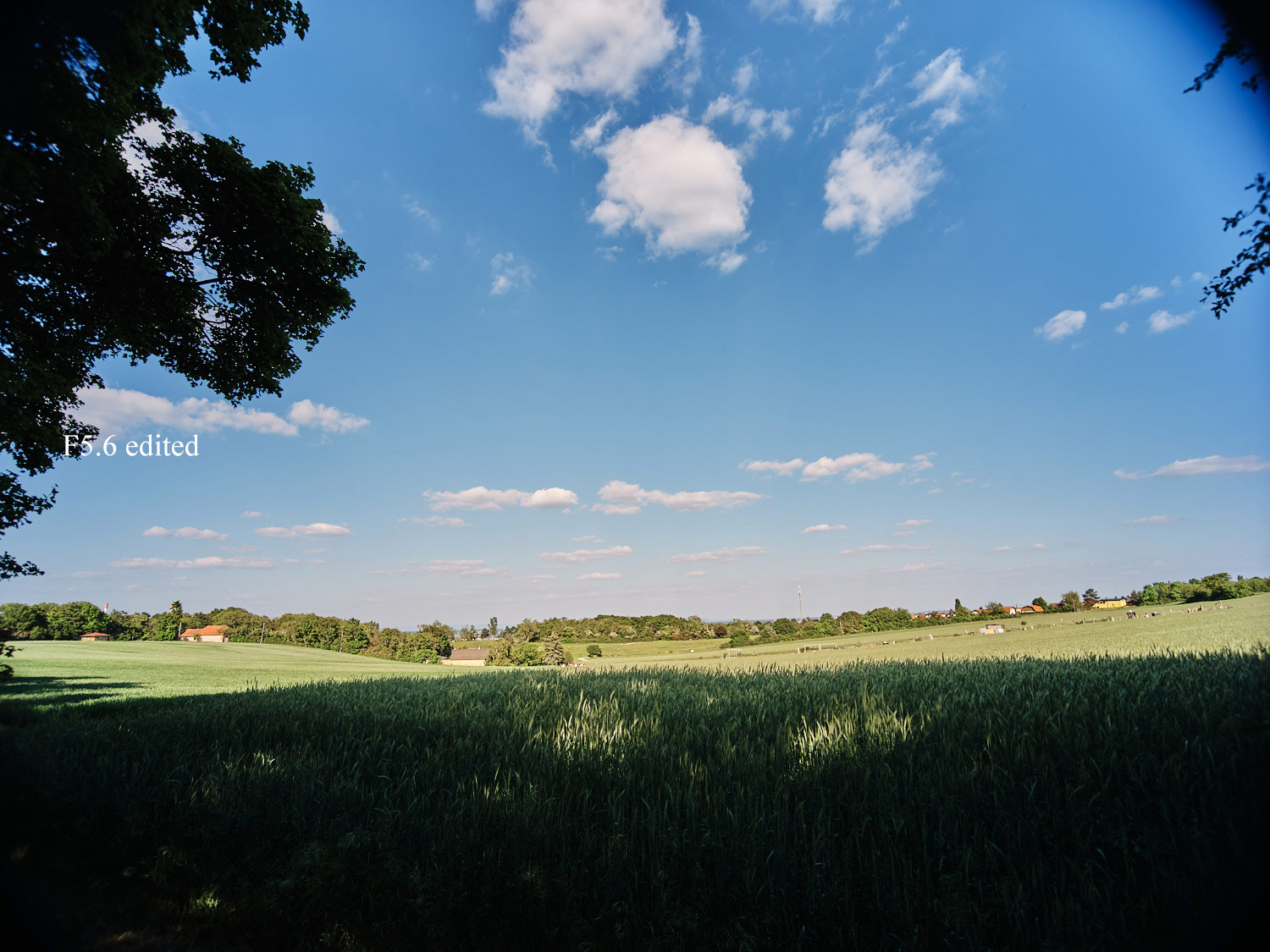
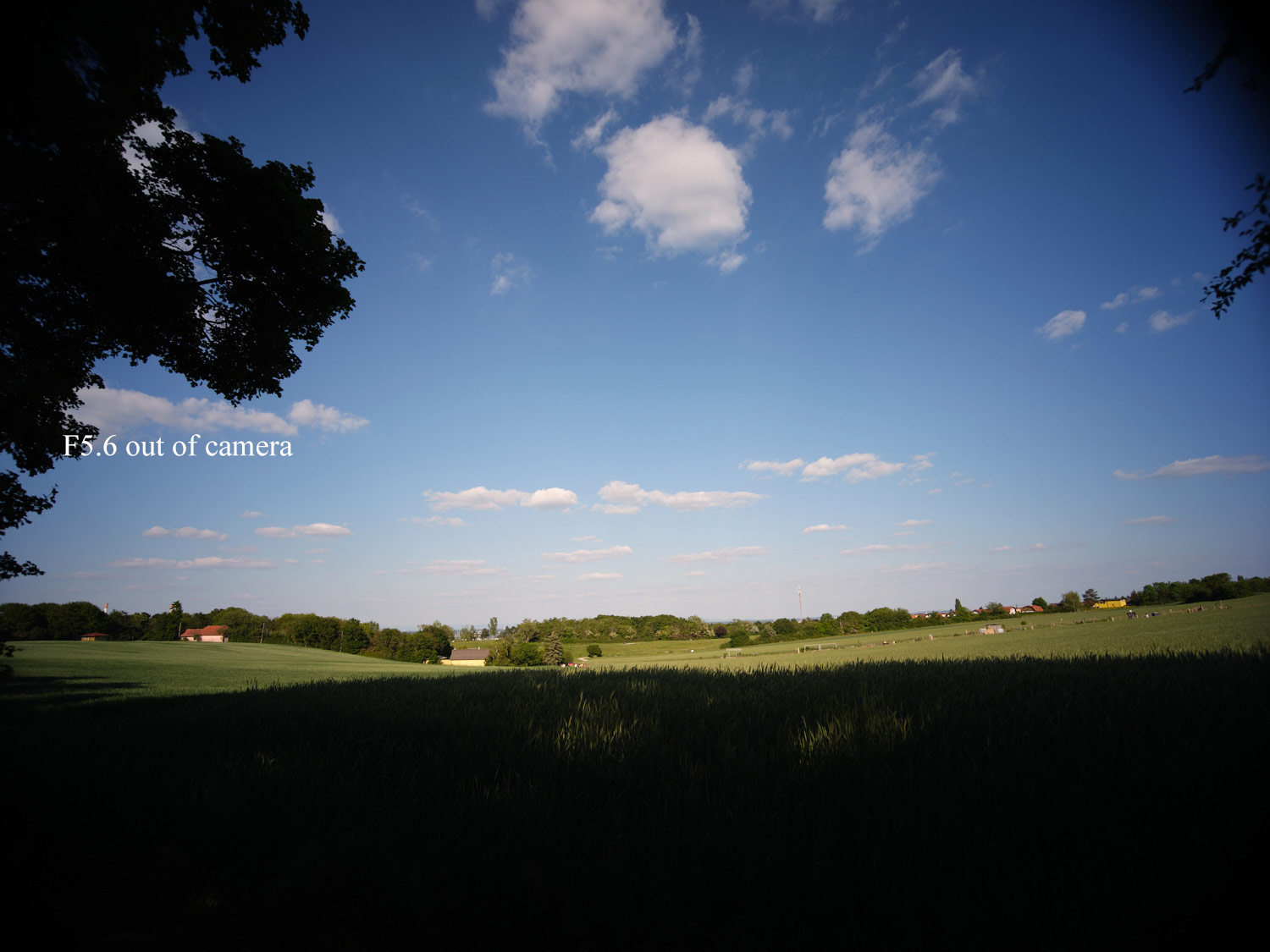
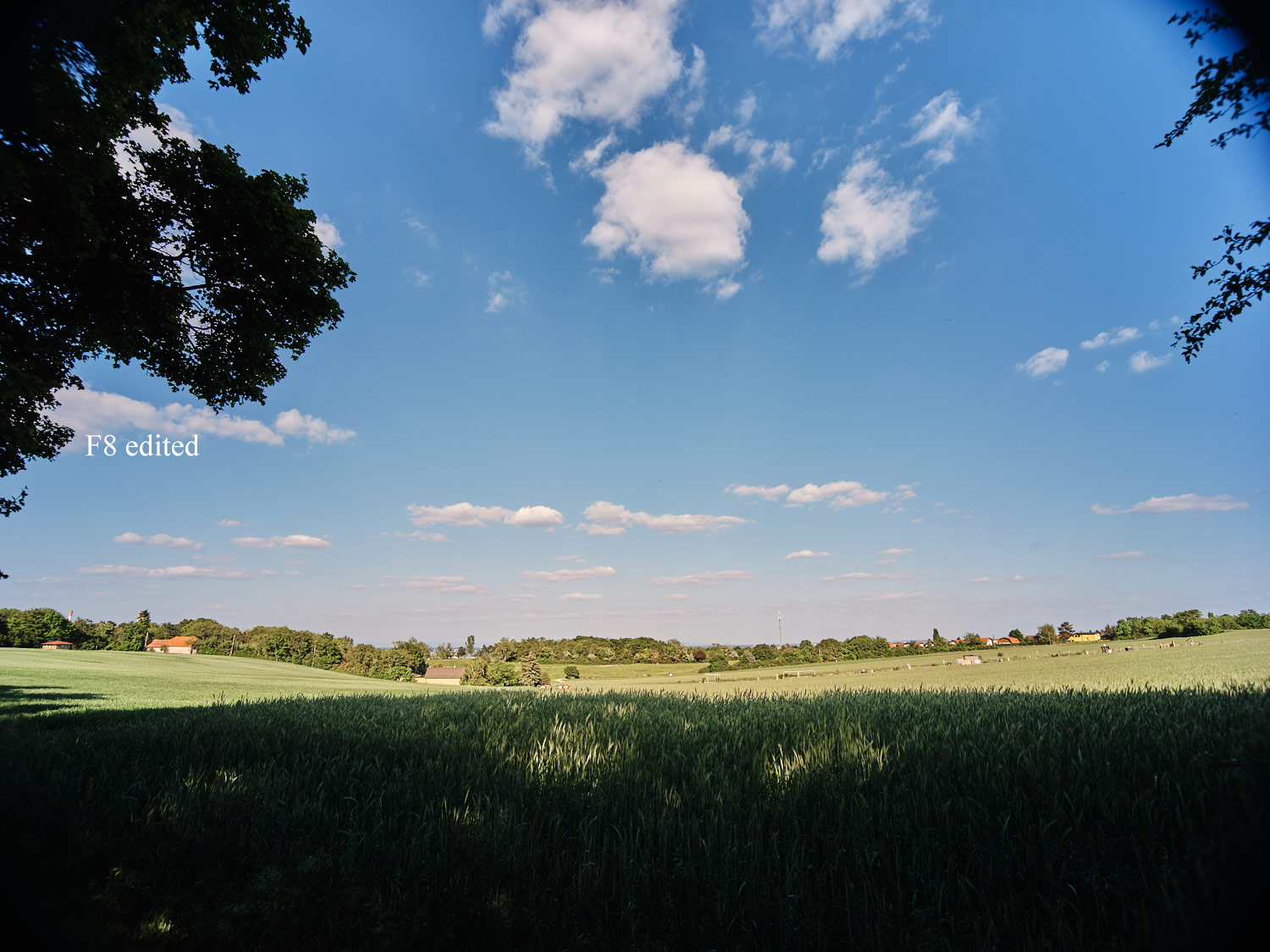
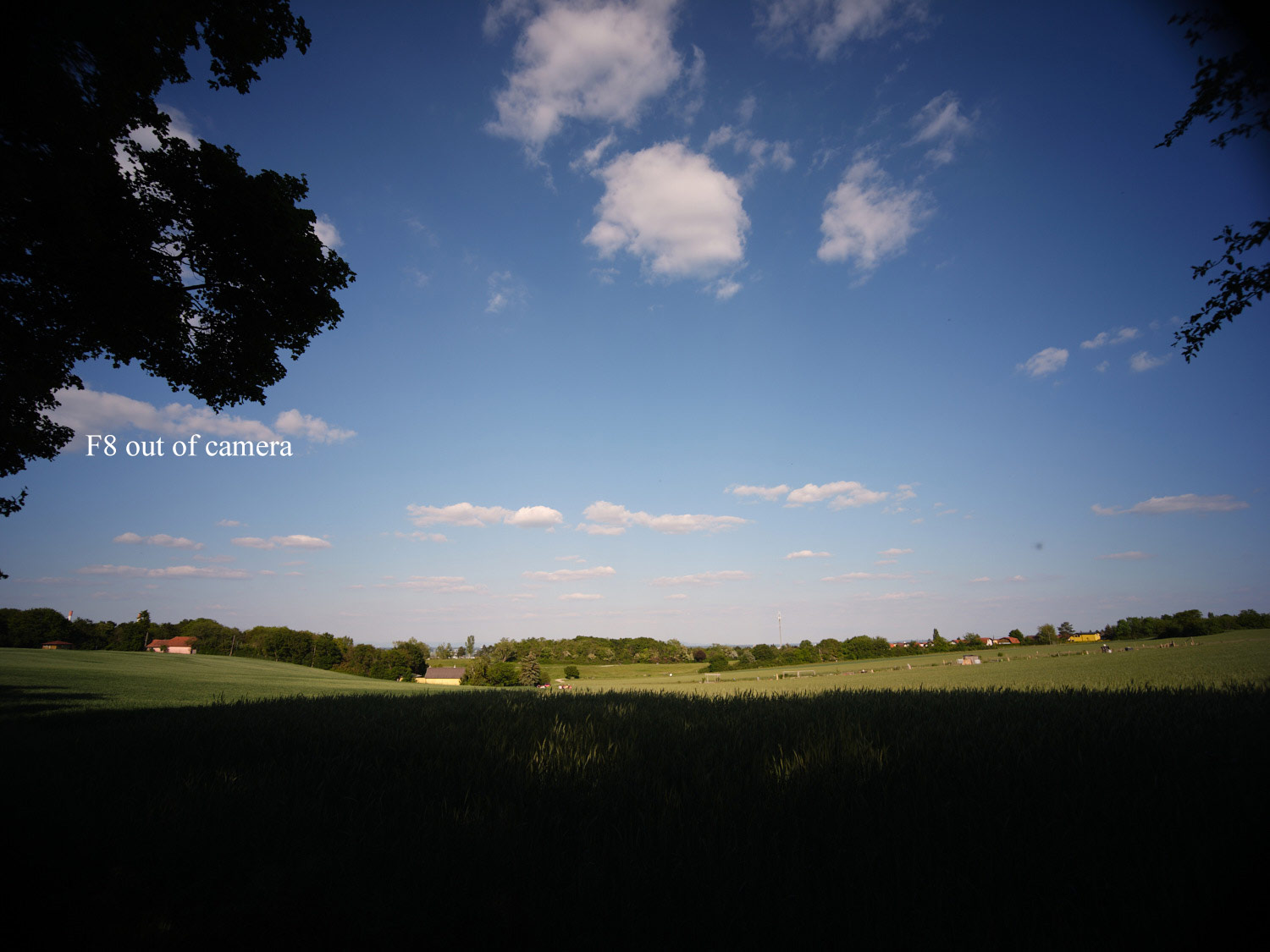
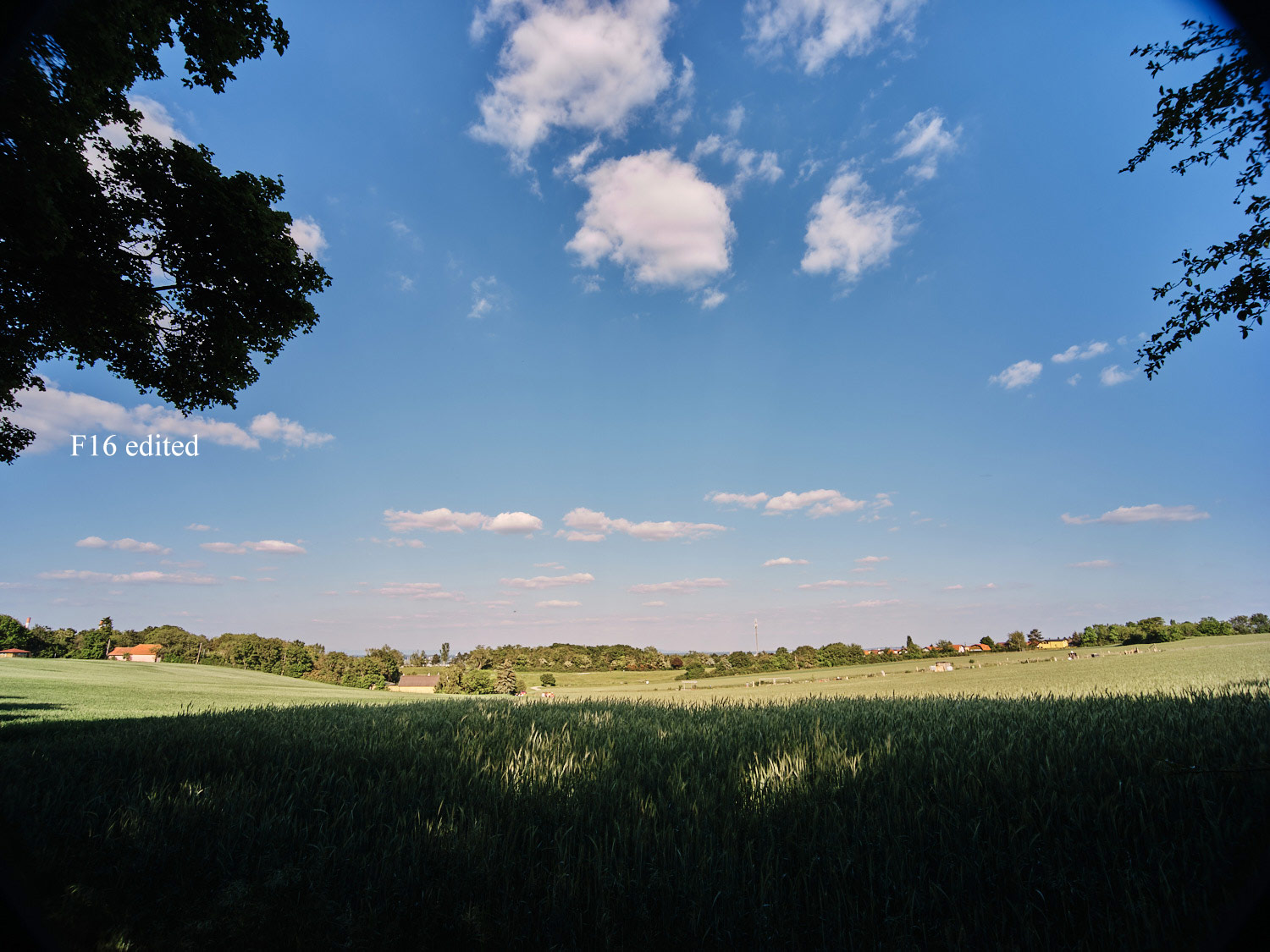
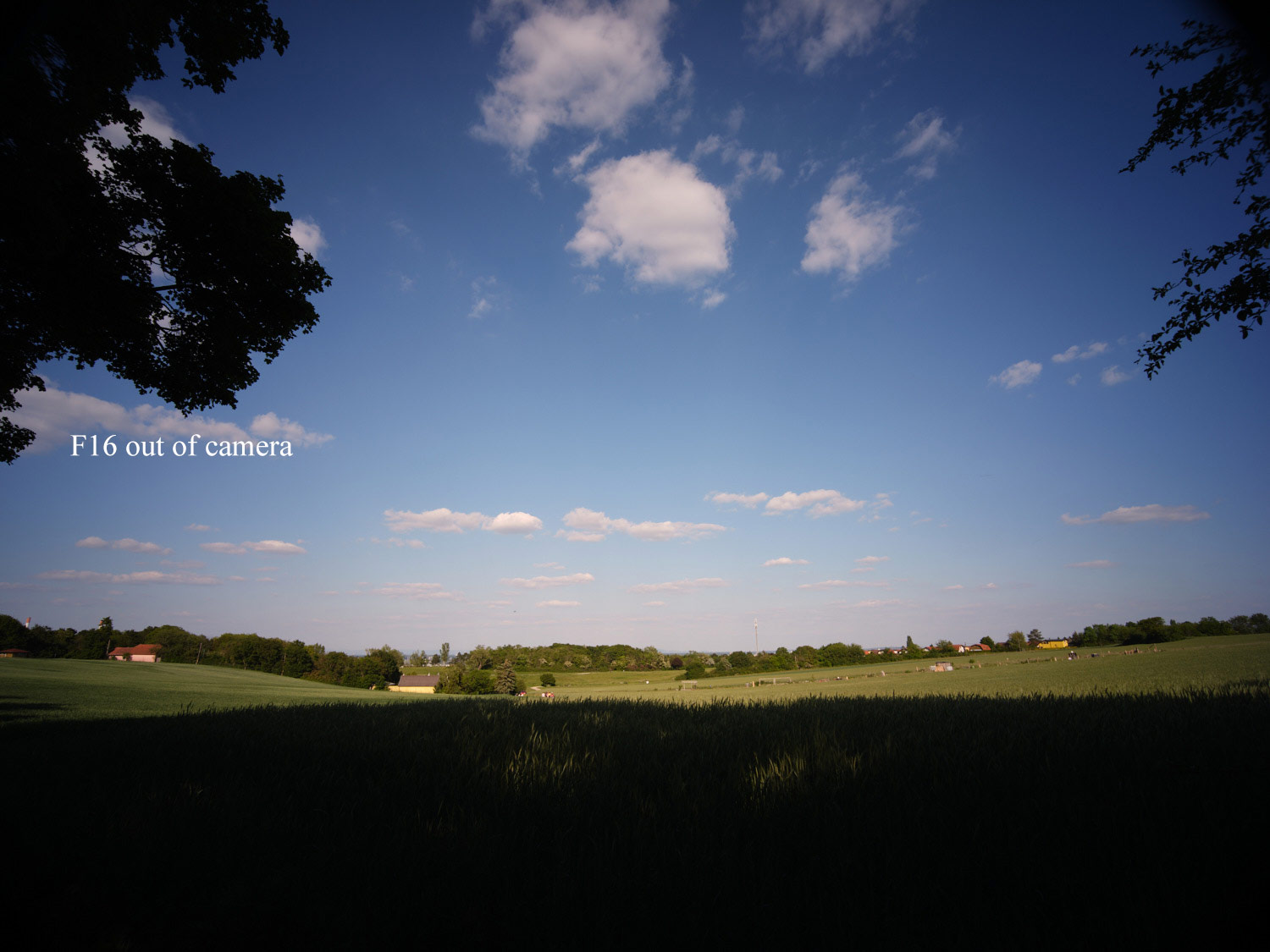
Voigtlaender Color Skopar 21mm F3.5 – edited & unedited at different f-stops
The Skopar gets close – not as close as the Zeiss C Biogon, but it performes surprisingly well. This lens is tiny – a tad slow for some of you, but on Mediumformat it becomes a 16mm F2,8 if my math is correct.
BUT: We have two little Problems here. You cant get utterly rid of the dark corners, and even if, there is some smearing visible. On the other hand – compared to its size and prizetag, the little Skopar does a great job if you crop the corners a little.
In terms of sharpness it is a little behind the Zeiss Biogon, great in the center, very good at the edge and good in the corners IF you cut away the dark corners and the smearings.
Other M-Mount Lenses testet
Minolta M-Rokkor 90mm F4: Sadly this Miolta lens does not work so well. Strong vignetting, clearly visible at every f-stop.
Leica Summicron 40mm F2: The smallest existing Leica M Lens has a lovely rendering on M-Film Bodies as well as M9 and M(240), but unusable on the GFX. Probably the funniest combination of Lens/Body mount.
Zeiss ZM 25mm Biogon: I was very curious to see this lens on the GFX, because of its (almost) legendary IQ and rendering. I have shot some of my best landscape pictures during the last years with this lens, though it is quite tricky to use in order to avoid cyan/magenta edges. Sadly it does not perform well. Dark Corners from F2.8 to F22.
Conclusion
Not what I hoped for, but quite expectable: Leica M-Mount lenses are optimized for a Fullframe Sensor, and built as small as possible without sacrificing too much image quality. In fact they are way better than most of my other lenses – but as I said they are made for Leica M. So its no surprise to me, they don’t work perfect on the Fuji GFX.
But we have seen 4 pretty decent performances on the GFX. The Leica Summicron 50mm and the Voigtlaender Nokton 50mm both deliver very good Image Quality, if you crop the corners, or shoot in 4×5 mode.
The Zeiss 35 C Biogon came closest with a very good performance across the frame, especially from F11 on, where just the outer corners are darkened. Cropping 200 pixels solves the problem and you are good to go with a incredible small and affordable lens, that can mounted on almost any mirrorless system.
The Voigtlaender 21mm Color Skopar is just a tad behind the Zeiss lens, when we consider vignetting as well as sharpness. If you want a tiny ultrawide angle lens that is a 16mm lens on the GFX – pretty sharp except for extreme corners – there you go!
Final Words
If you already have some decent Leica M lenses at home and budget is tight, you might start with an adapter and try out your lenses. If you do not have any Leica M glass, you probably should go for Minolta MD, Leica R or Mamiya 645 and Pentax 645 lenses. All of those have decent lenses in their line-up that will perform better on the GFX and are way cheaper than Leica M Mount.
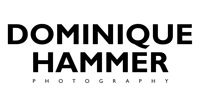

What about using in FF crop mode, would the m-mount lenses still vignette? Now that the prices are getting reasonable on the 50R, I might sell my x100VI and get one, then I could use my m-mount lenses. I assume I would still get the DR of the 50R in FF crop mode, right? Hopefully better than a Nikon Zf or similar FF body as those only boost my DR .5-1.0 stop over my XT5.
Interesting question. I never shoot in FF mode to be honest. But I guess the lenses that still vignette on a Leica M body will do so in FF mode, of course without the smearing edges. So the vignette will be similar to a fullframe camera body. So I think the 35mm Zeiss 2,8 will be a stellar performer, as well as the Leica Summicron 50 that I tested. The Voigtlander 50mm 1,5 is a little bit darker at the edges, but I always liked that when shooting wide open. The Voigtlander 35mm Ultron should also do a decent job.
If I understood correctly, the Fuji just uses a smaller part of its Sensor in FF Mode. So it kind of crops „in Body“. Which means you get everything from DR performance, with just the sweet spot in the centre of the sensor.
Why all the hand wringing over Leica M lenses? I used a Leica R 50mm F2 Summicron ROM version, and the legendary 100mm F2.8 apo macro also a late Rom version, both converted to Nikon F bayonet originally with a £30.00 K&M concept adapter Nikon to Fuji ring, and NEITHER has ANY vignetting at all, both give SUPERB results across the frame corner to corner on a Fuji GFX 100ilvus 21 mm vignettes as does 50mm milvus f2, which just covers with no hood and about 1mm to spare on each corner, both the Leitz lenses work perfectly!
Well, I agree with you – and I dont. Leica M Lenses are tiny. Really Tiny. And thats the whole point of the M System, I guess. Superb quality in the most compact outfit, looks beautyfully, is a joy to use. And thats the main reason I have it. I can take a full frame camera with 3 lenses, and still its a tiny camera bag. Good for travelling, good for hiking, good for almost everything.
Medium Format is a different level of seize, weight and you end up carrying around a lot of heavy stuff. Thats why everybody is curious if these little exceptional performing M Lenses might work well on a bigger body. I was also curios about R Lenses. Unfortunately, I dont have any, cause I dont have a Leica R Camera. Also I haven’t found a lot of people doing tests with the R system and Fuji GFX – and writing about it. Perhaps you could do that, guess it would be a good read for a lot of curious people…
hey ! do you have an image of a test with the 40mm Summicron on the gfx ? does it covers at least 6/7 ratio ? would be a nice set up, thanks
Hi! Unfortunately not. Also I sold the adapter… But everything that was close of being usable was mentioned and shown with a picture. So i guess the small summicron is not near anywhere. But there are 2 versions (the canadian and the japanese). maybe one is better? I have the canadian. I heard that the small voigtlander 35 F2,5 does surprisingly a really good job. maybe you can try that.
Martin, do you mean the color-skopar 35mm 2.5? I can nit find info on the 3.5 version.
I think its the 35mm F2,5 Color-Skopar. I only know this. Unfortunately I dont have that – it would surprise me, if it performes better than its bigger brother. the 35mm F2 Asp. – I am very curious 🙂
I bought the Voightlander 75mm 1.5 for use on the Fuji XT4 for video work. I saw this and another thread and bought a M-GFX adapter. I love the 75mm on the GFX50. Works super well in 6:19 crop and 1:1 crop. Full frame wide open it’s a little dark and distorted in the corners. I have the 50mm pancake and I dislike the AF action so much on the GFX50R. Seriously I’m about to just sell the only GFX lens I own. I also use Pentax 645 lenses on my Horesman LF camera that I have adapted for the Fuji GFX.
I love using the GFX50 now with that 75mm 1.5, super easy to focus and renders very nicely!
Hello Dominique,
I liked very much, what you write about adapting lenses to the Fuji GFX 50R.
I myself bought on used and nearly new for a very fair price uncluding the (new) 50mm GF lens as a „pancake“.
Beside that I adapt as well Zeiss Lenses for the Nikon F bajonett: the 50mm Planar f/1.4 works well with a small but heavy vignette on the outer corners. Much better works the Distagon 25mm f/2.8 macro with almost no vignetting and excellent sharpness and additional possibility of macro photography.
My experience with Voigtländer lenses on the GFX 50R:
The Nokton 40mm f/1.4 has great sharpness but heavy vignetting, must be cropped.
Surprisingly great works the tiny color skopar 35mm f/3..5 it has almost no vignetting!
My beloved super wide heliar 10mm ofcourse does not work, as it blacks out the edges and corners due to the builtin lenshood.
I would go and give the 21mm a try as a wide angle lens.
What I found out with the adapted Sigma 12-24mm f/4.0 ART: the maximum wide angle that goes with the GFX is abou 17mm without vignetting. That comes close to an calculated 13.5mm on fullformat.
Have much fun with this astonishing camera!
greetings
Martin Gerken
Hi Martin!
Thanks for sharing your thoughts!
I heard about the Nikon, sadly I do have the Canon system, and the adapters are pretty expensive, lets see if someone can borrow me one… Adapting Zeiss SLR lenses seems a good plan, they are affordable and can be found used oftenly in good shape.
What I also read about adapting to Fuji is, that some of the Leica R Lenses are stellar on the GFX, such as the 180mm and also the 50mm Summicron.